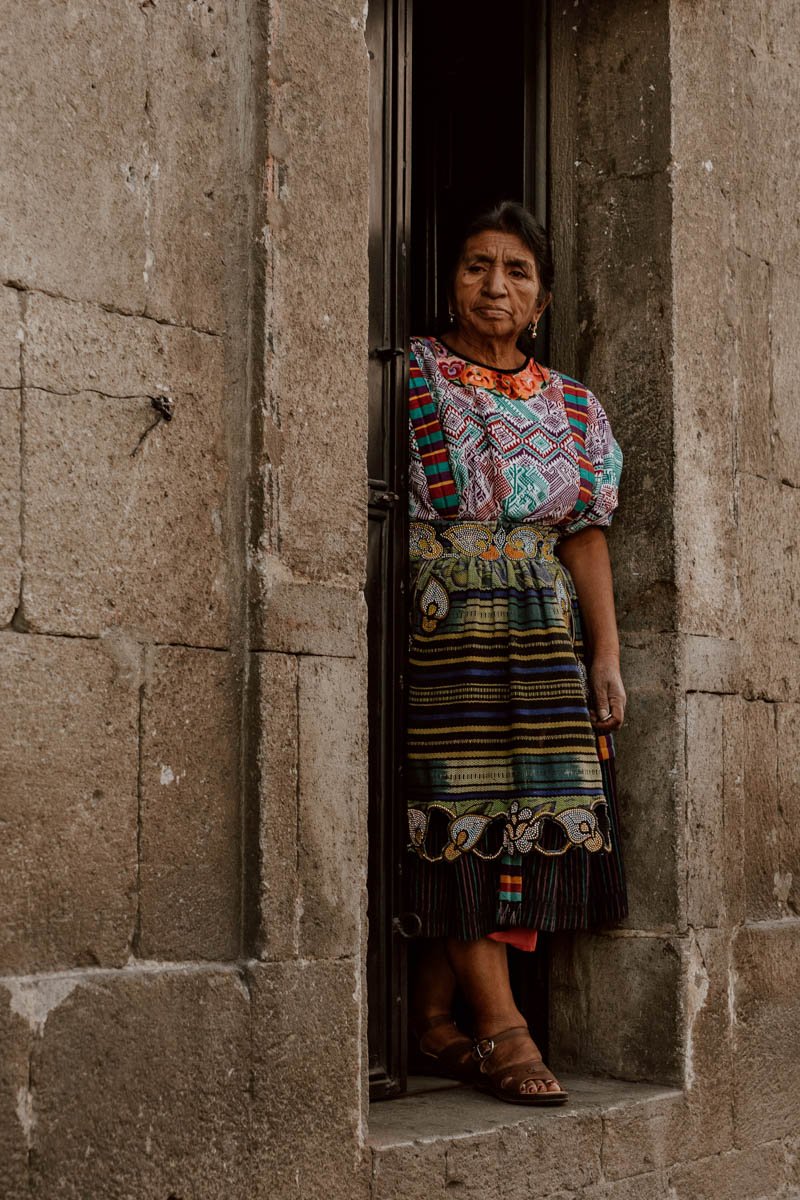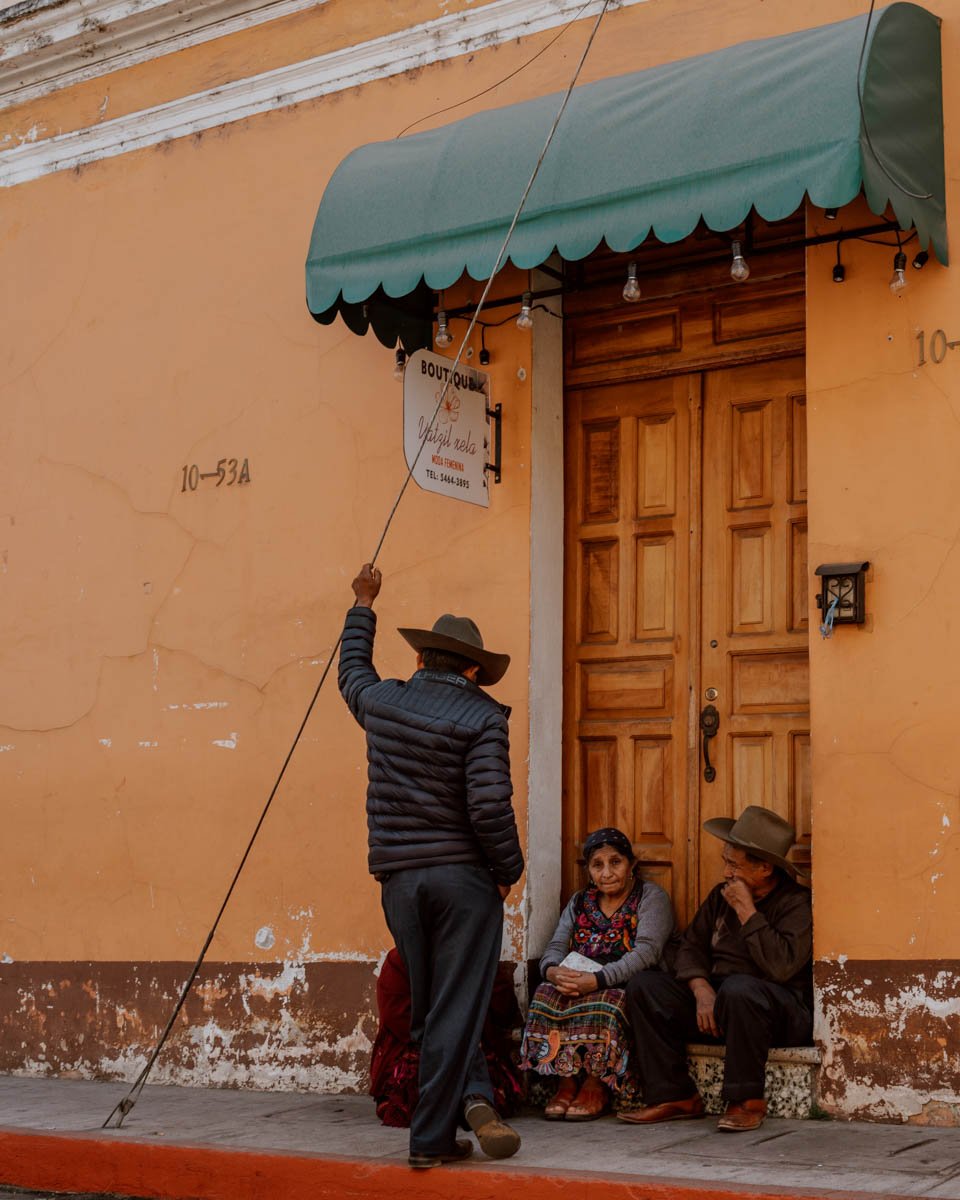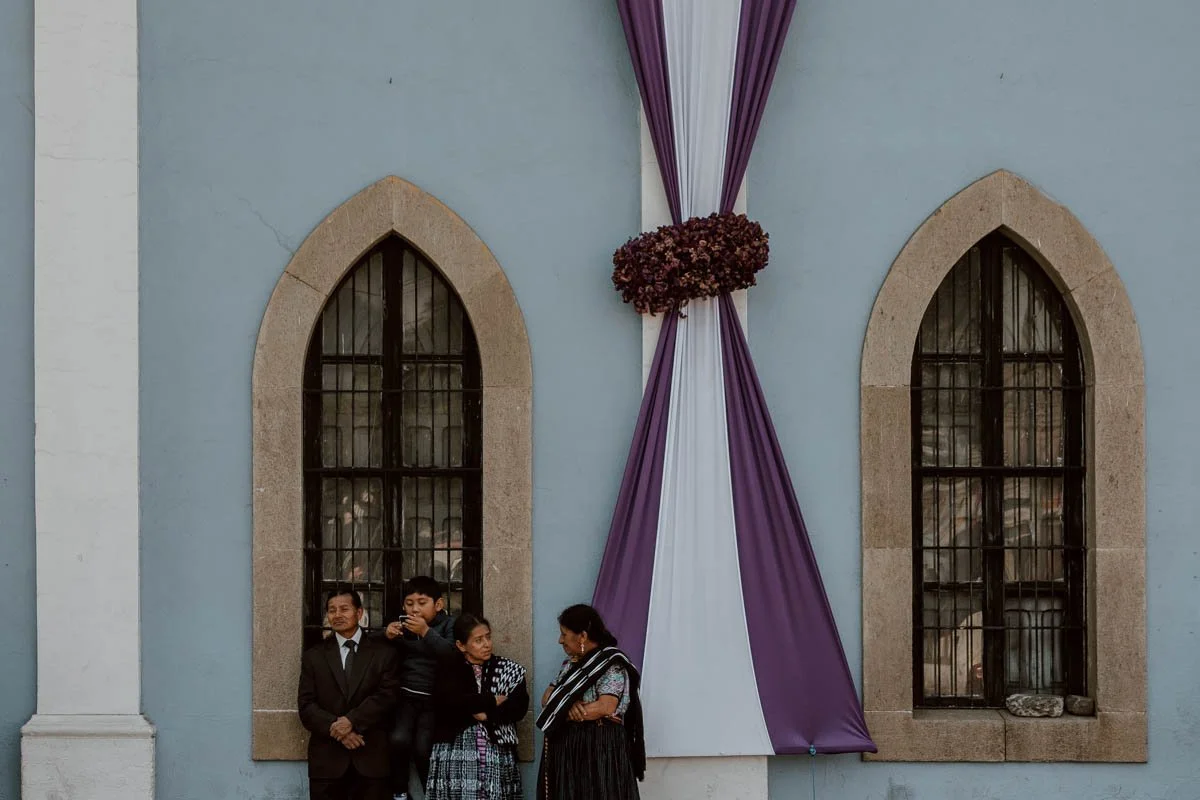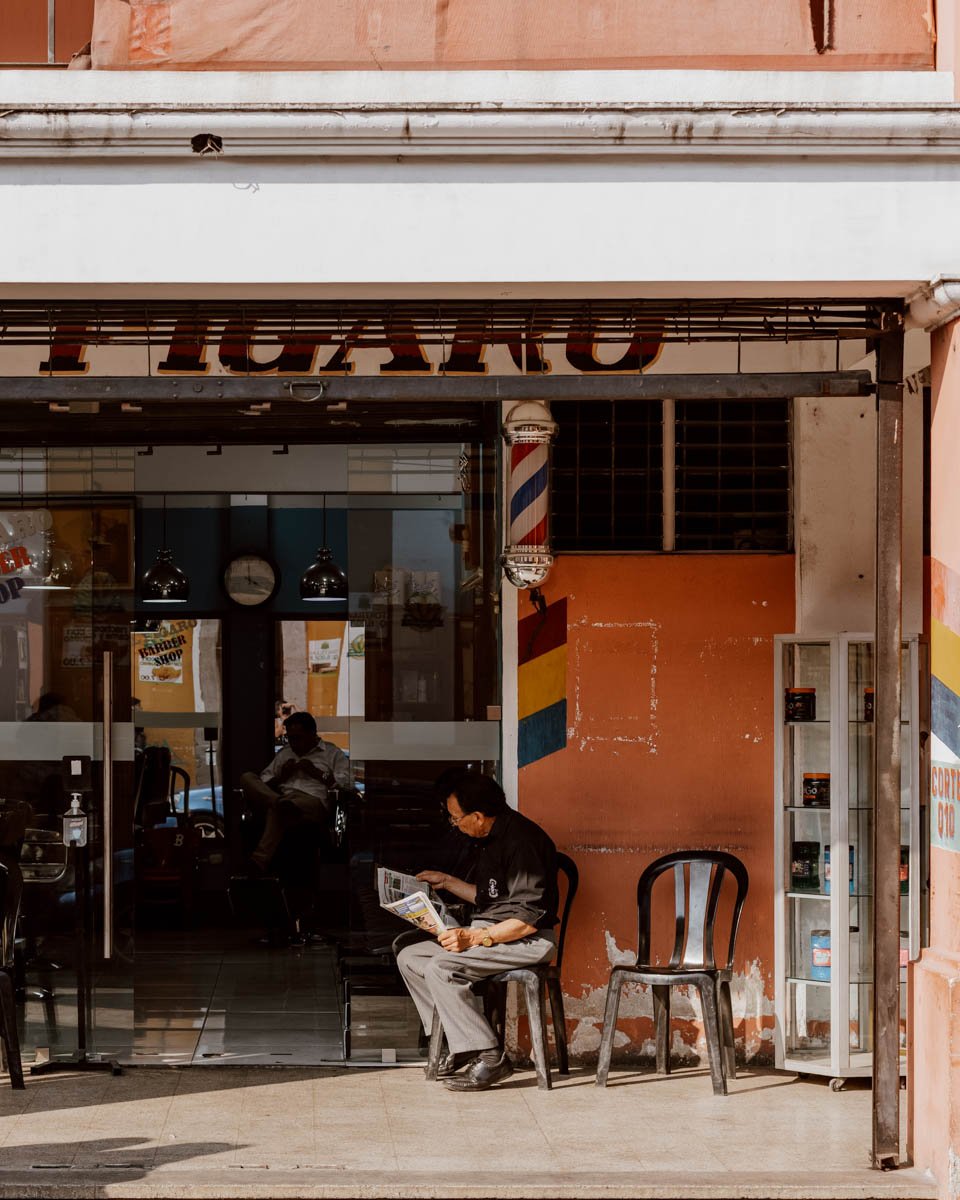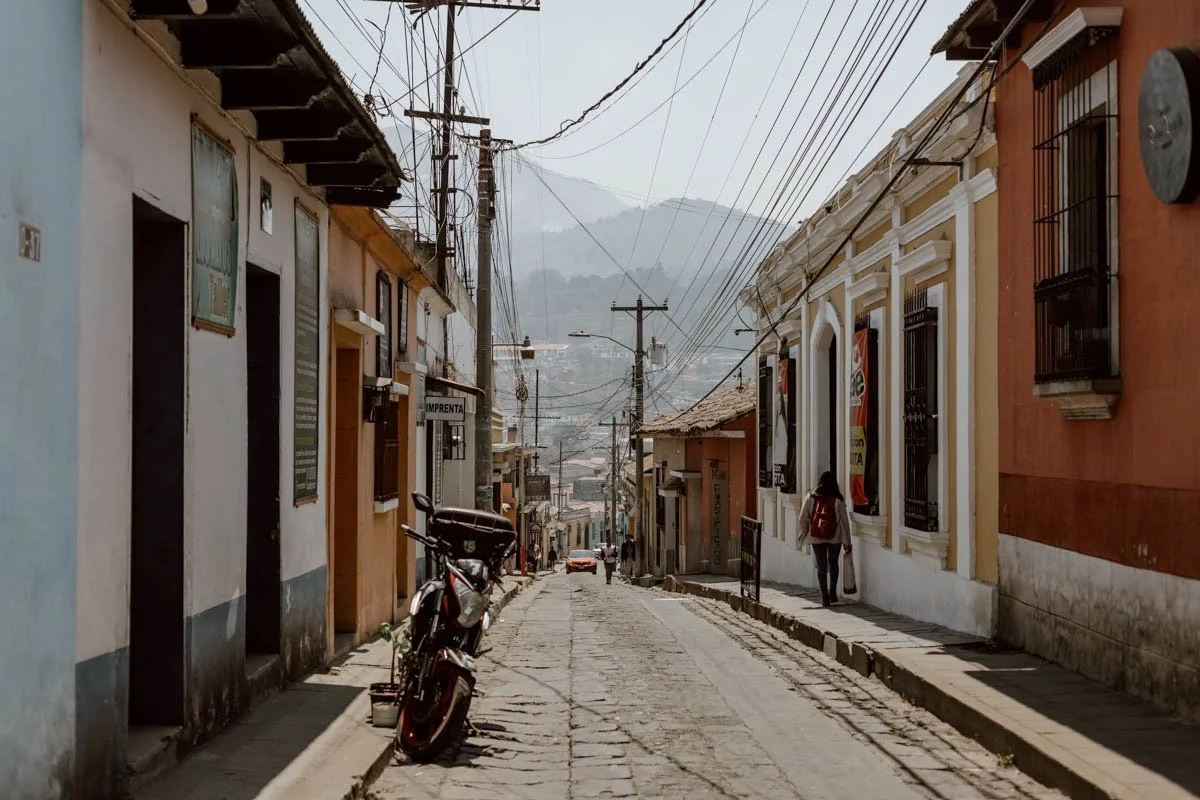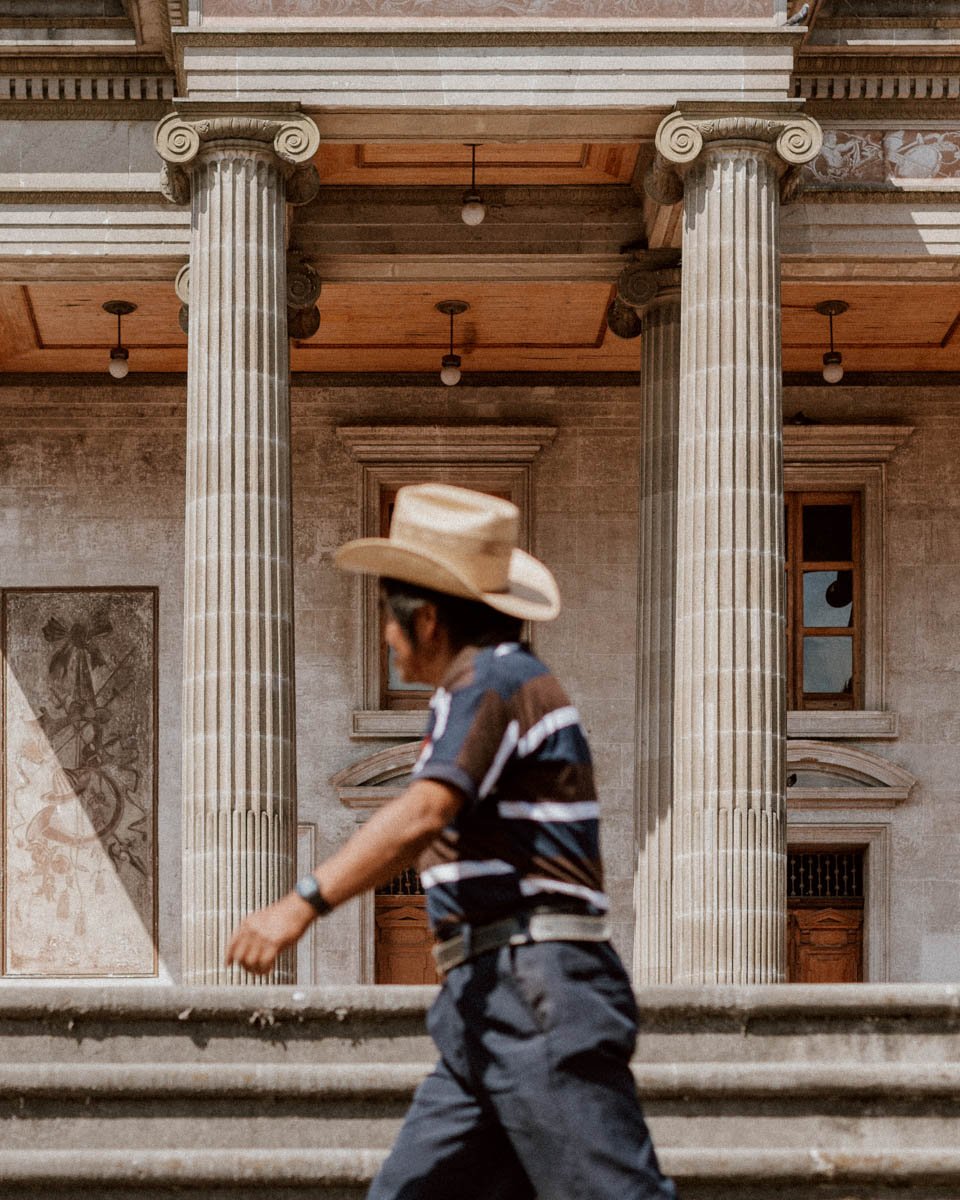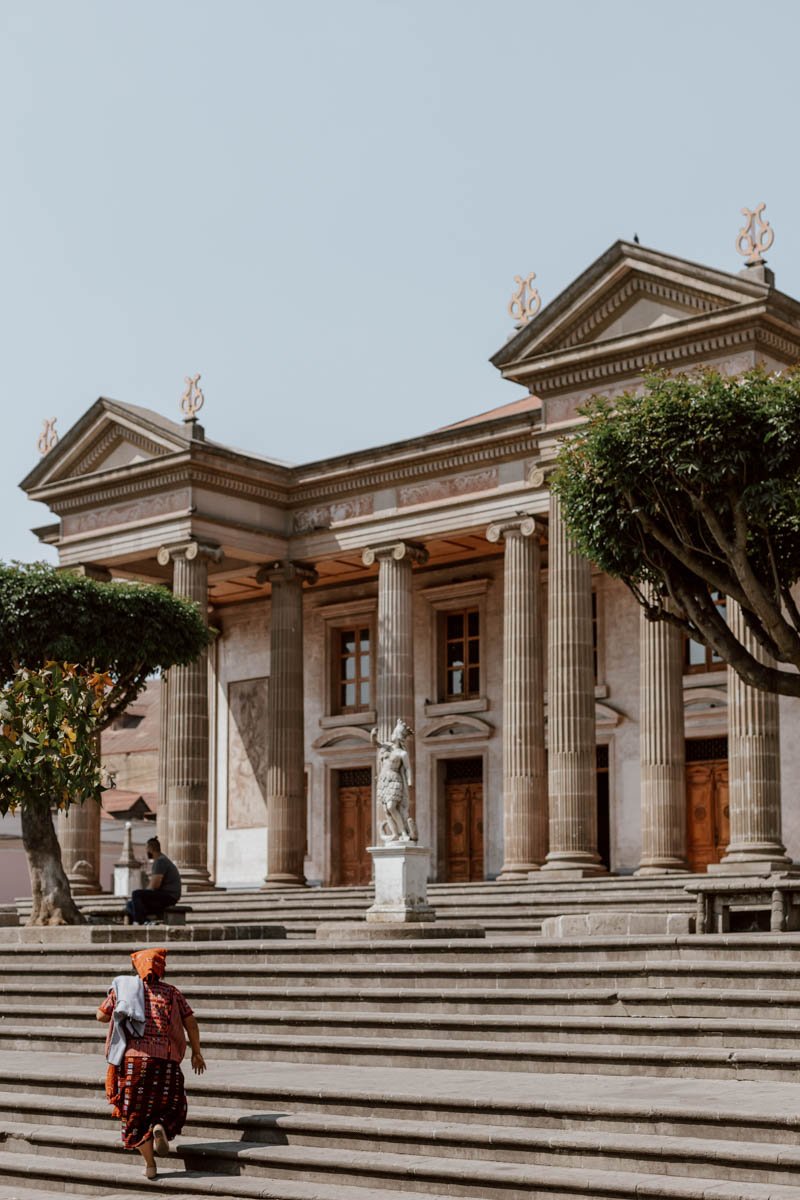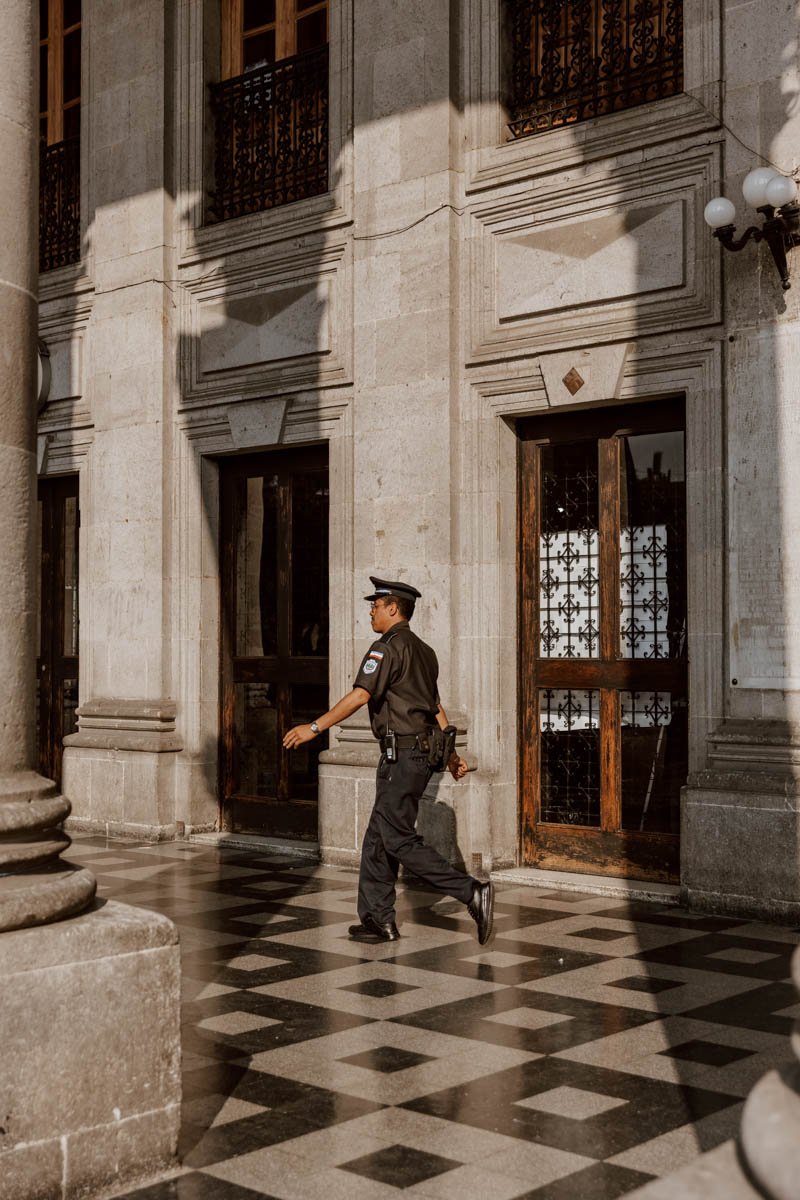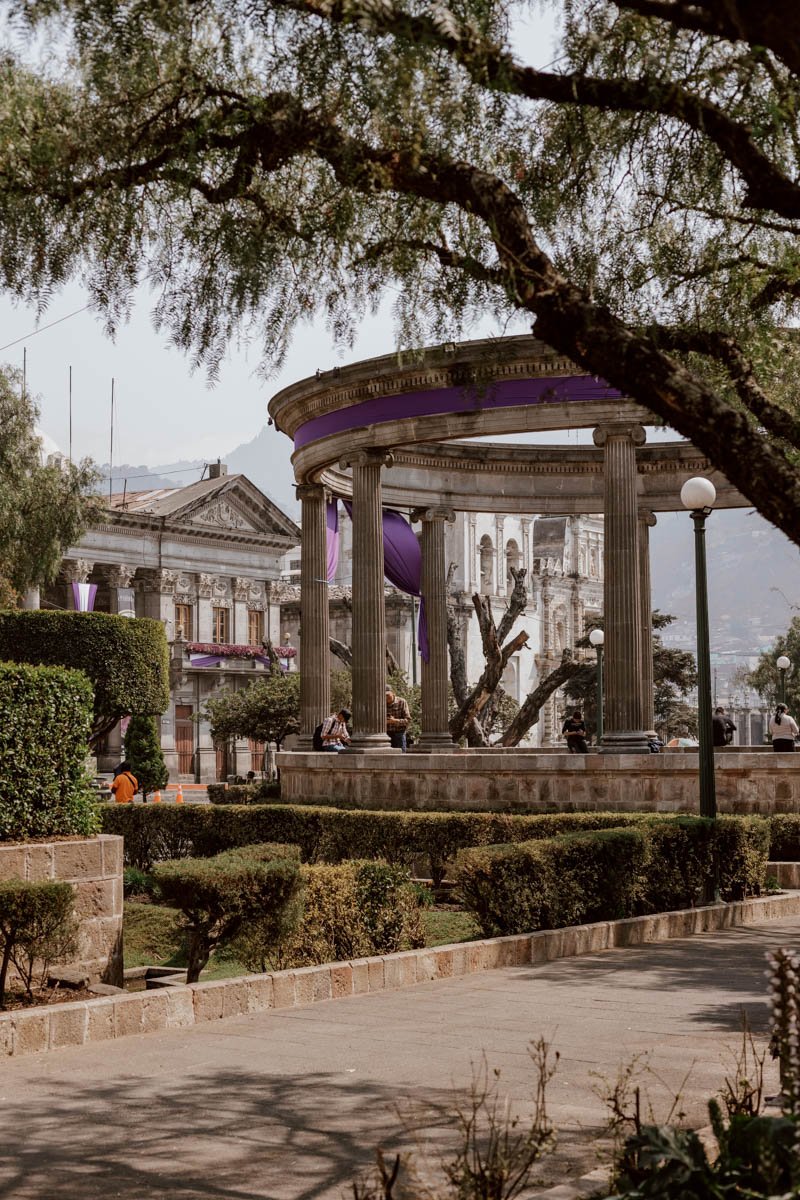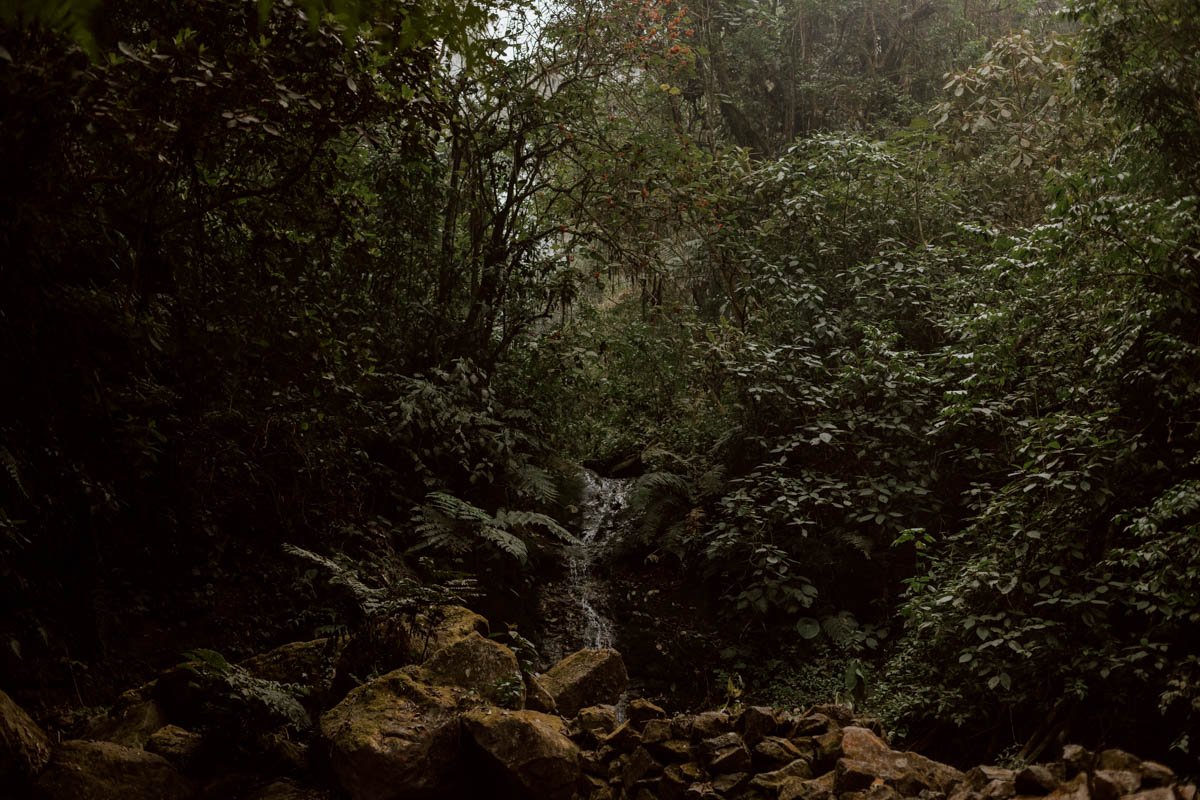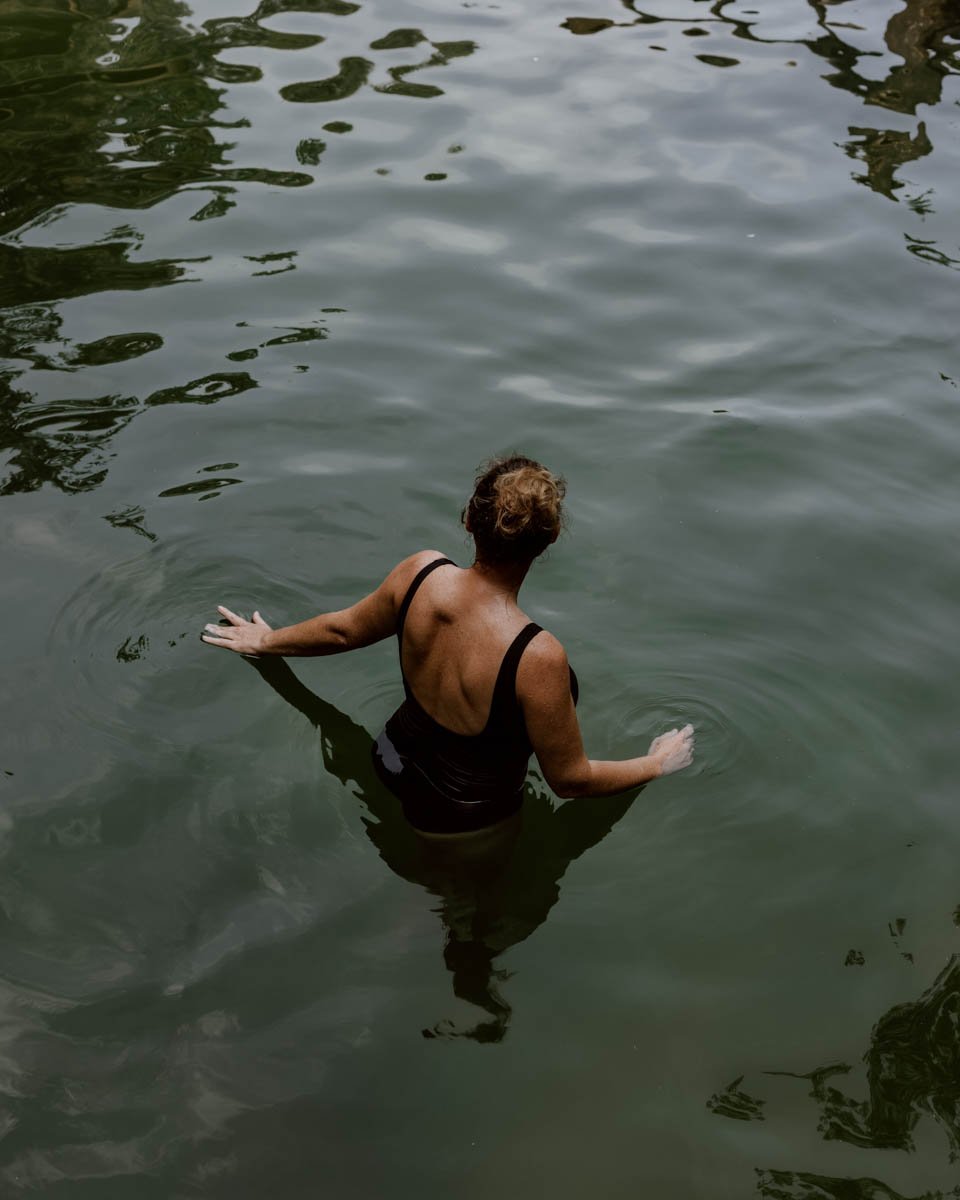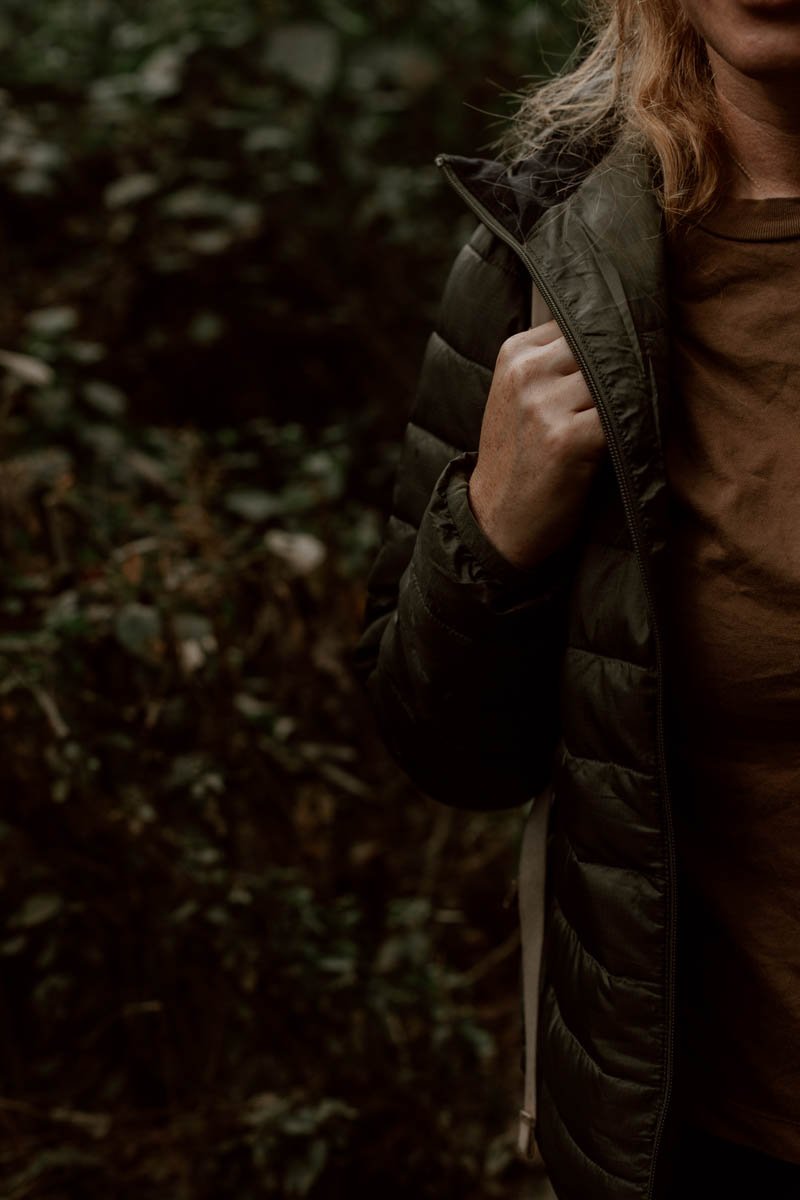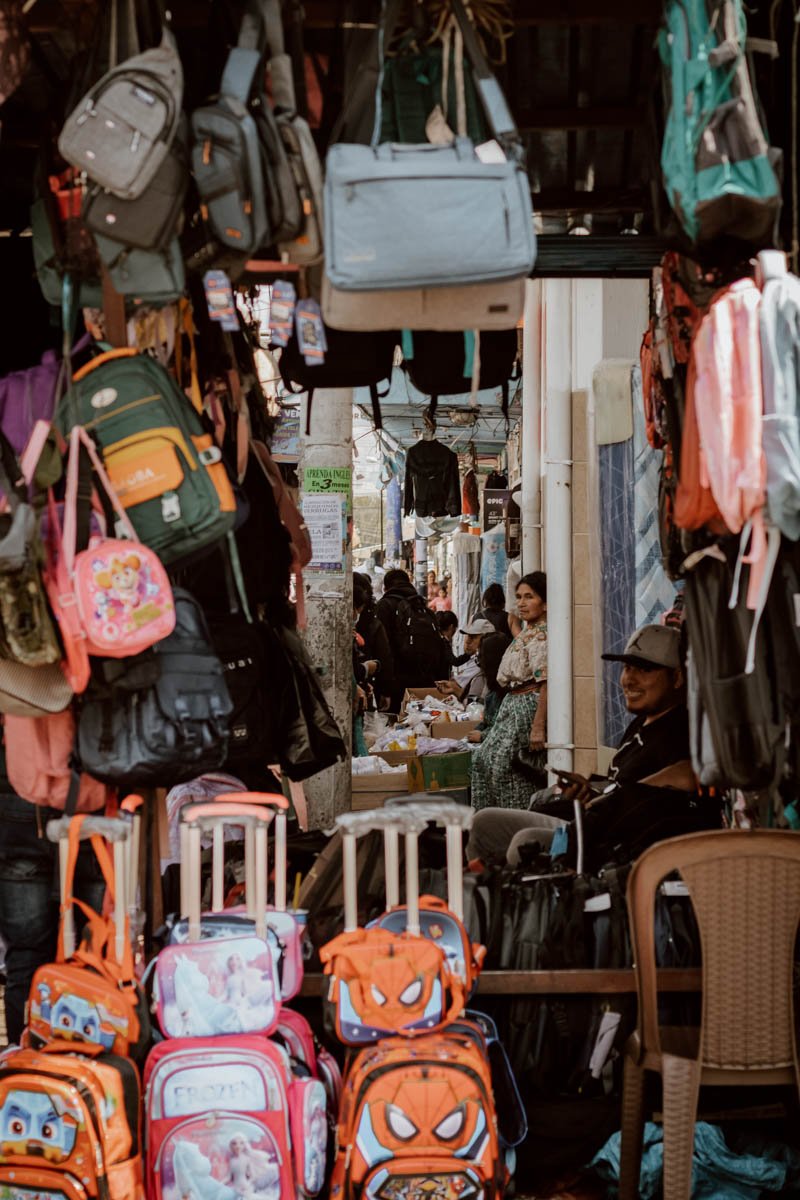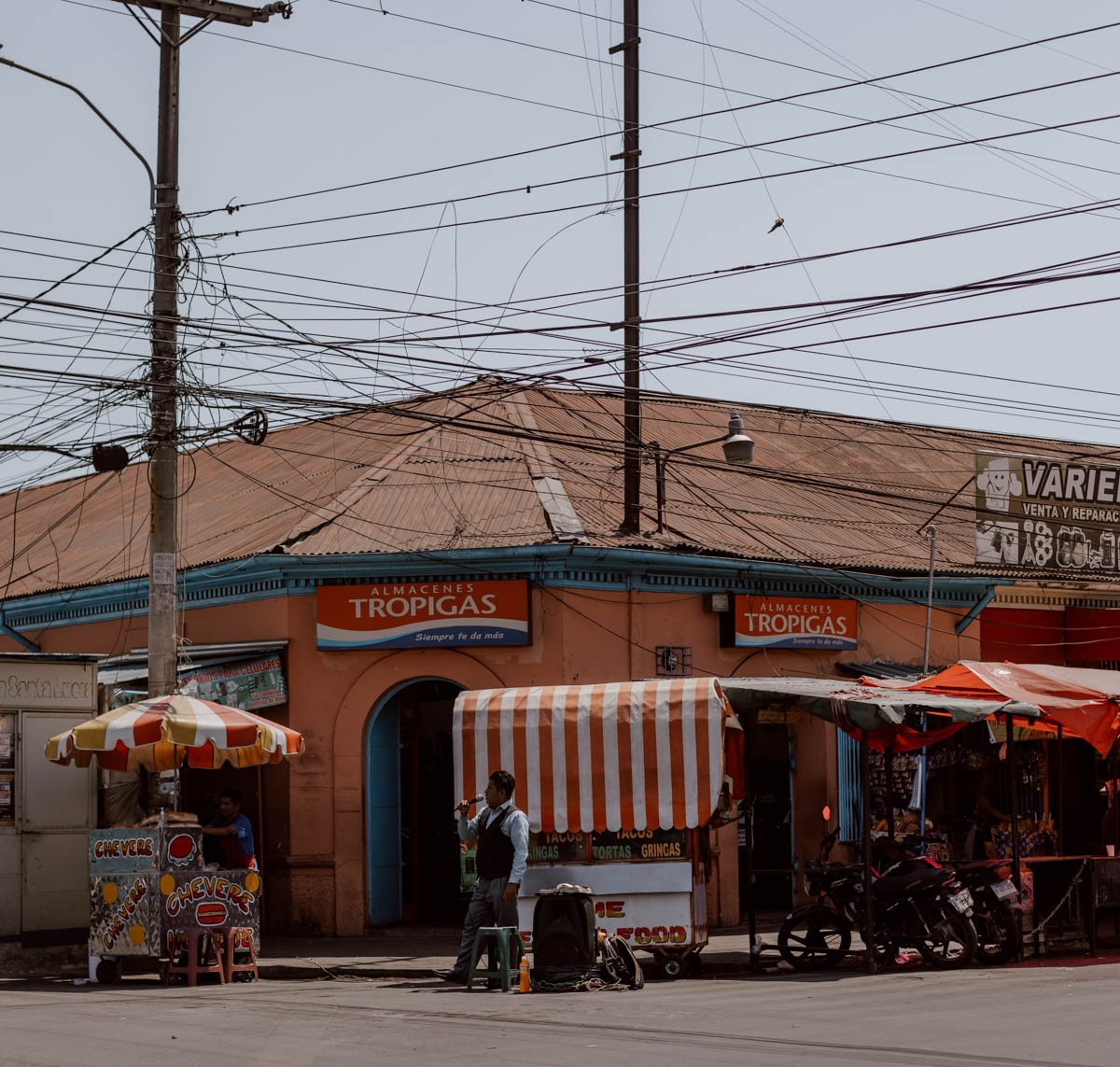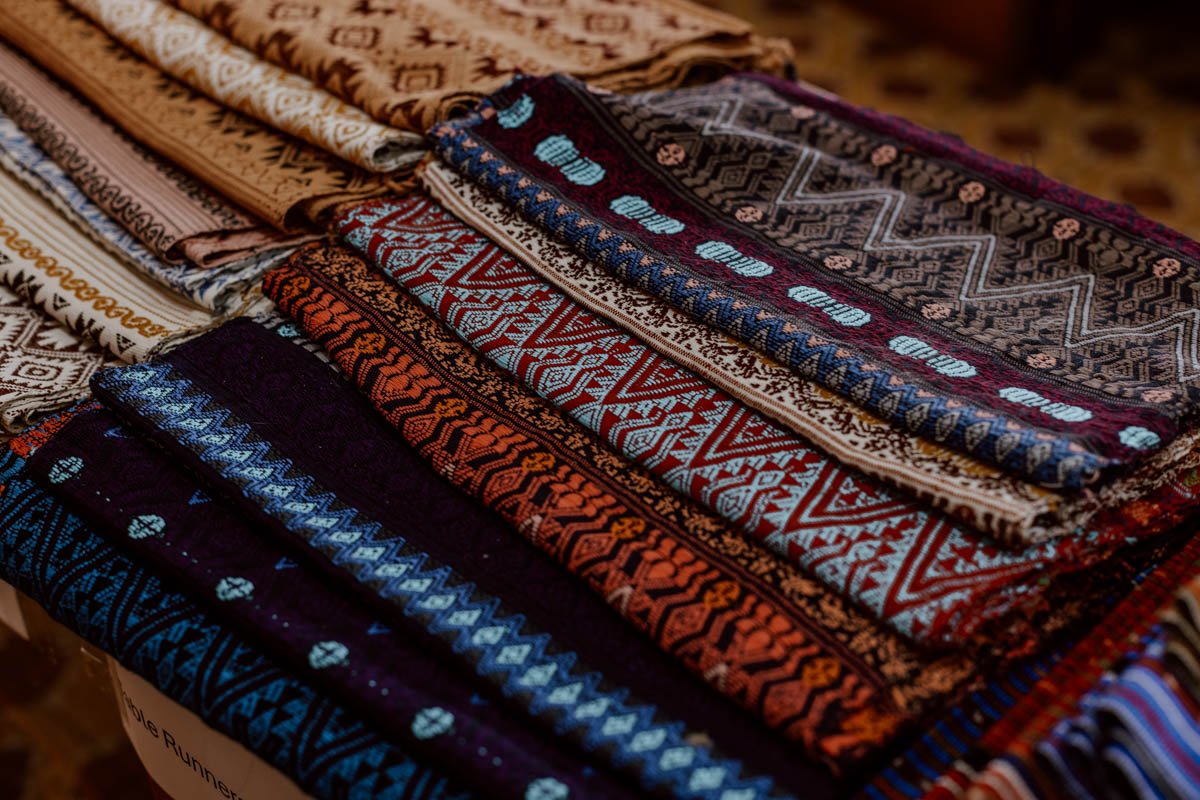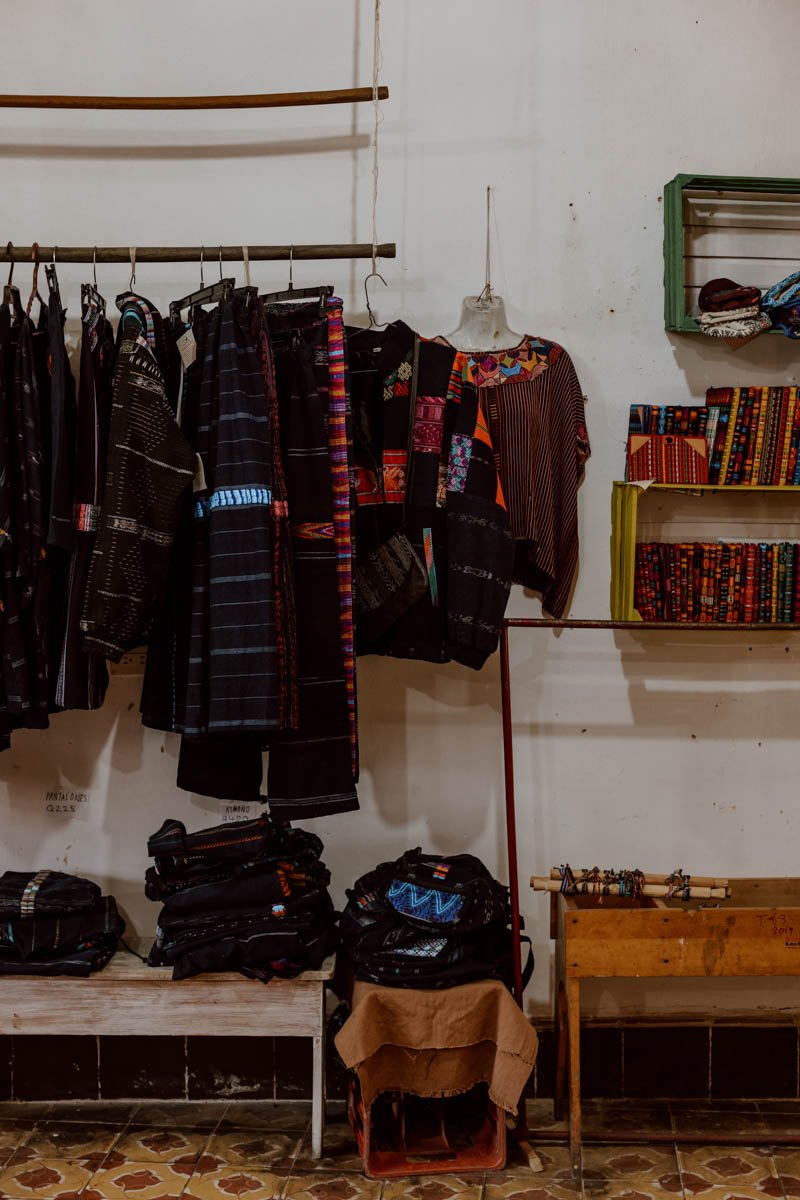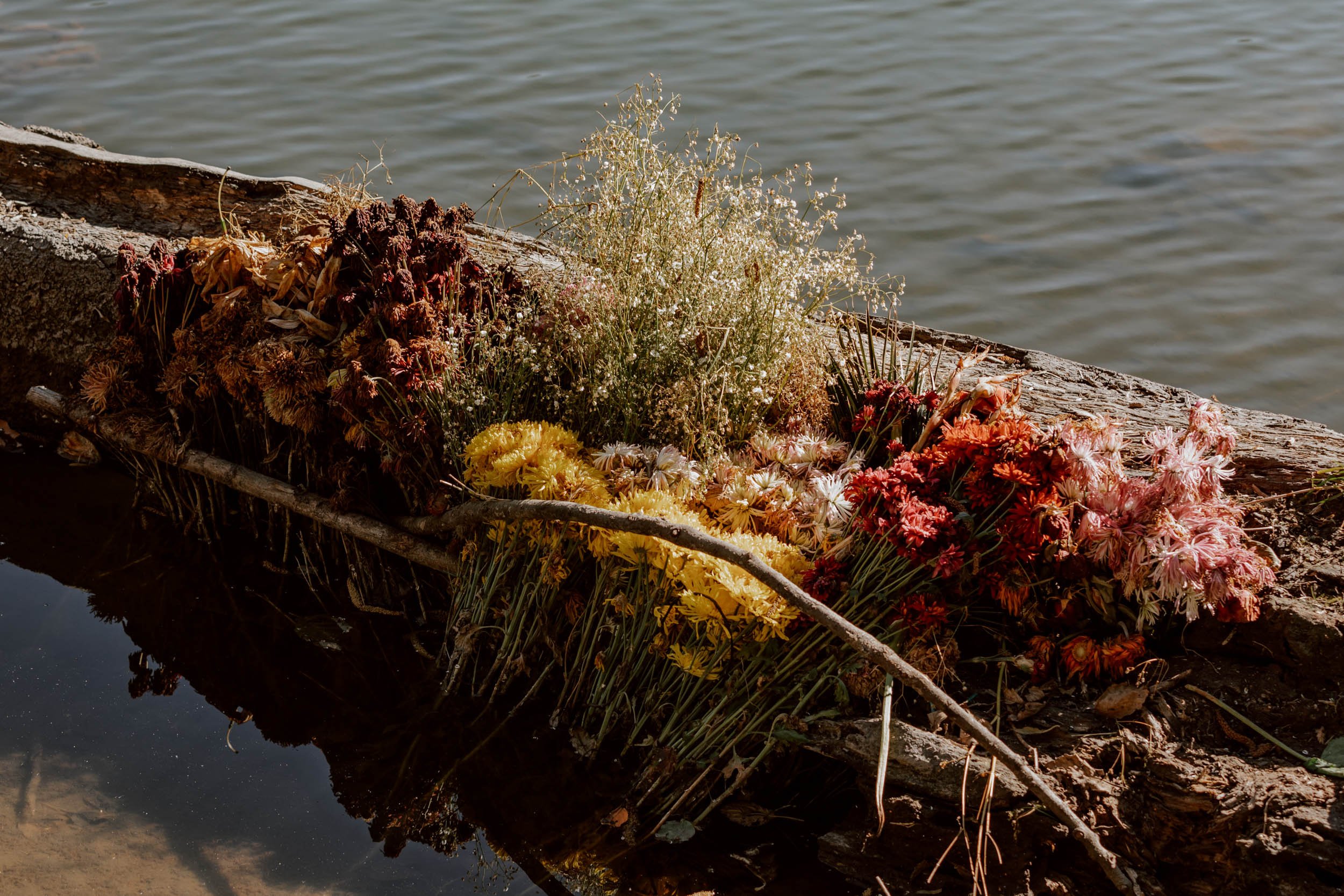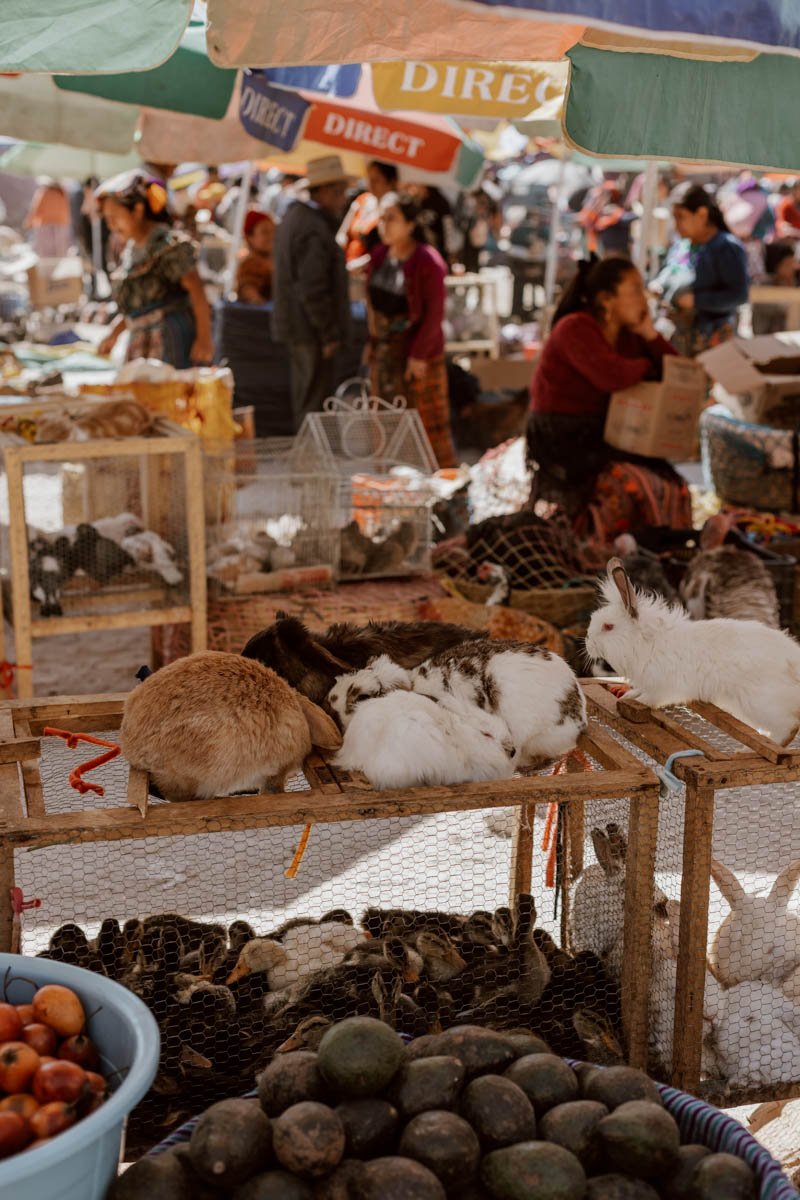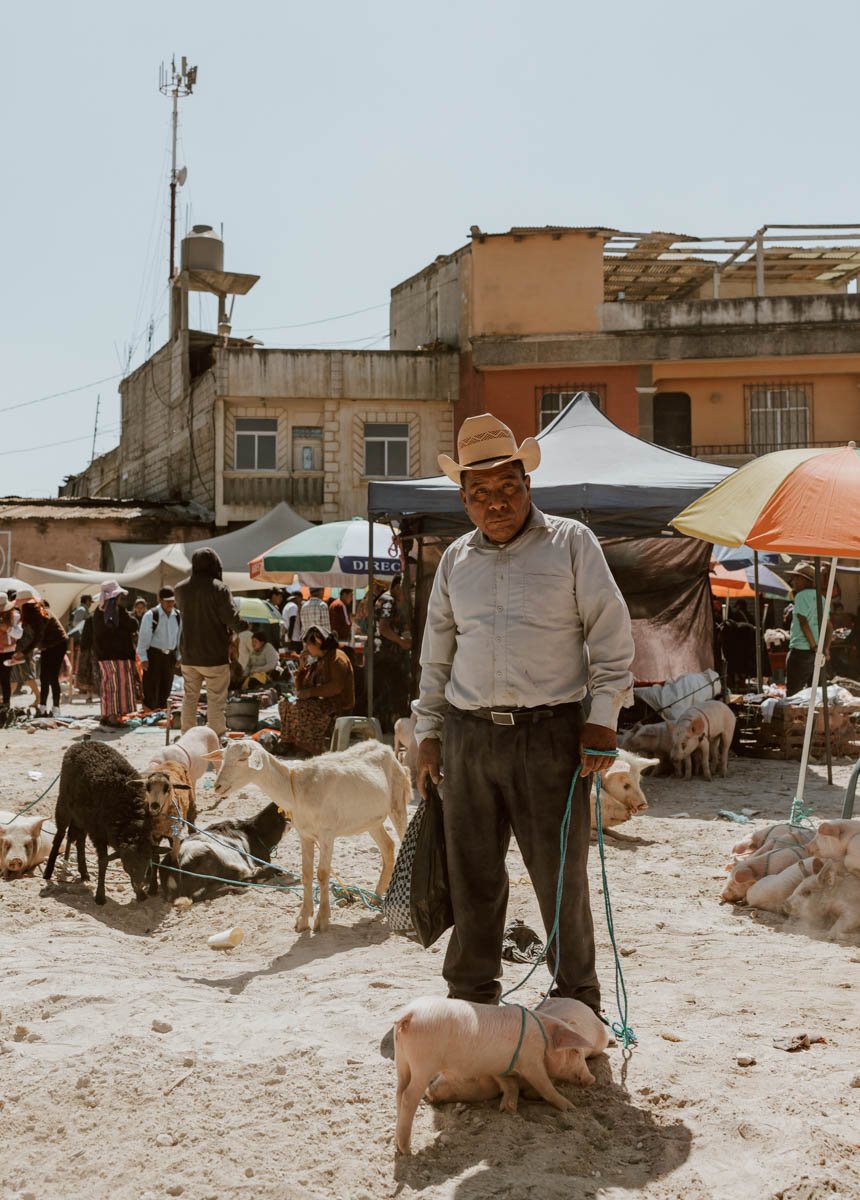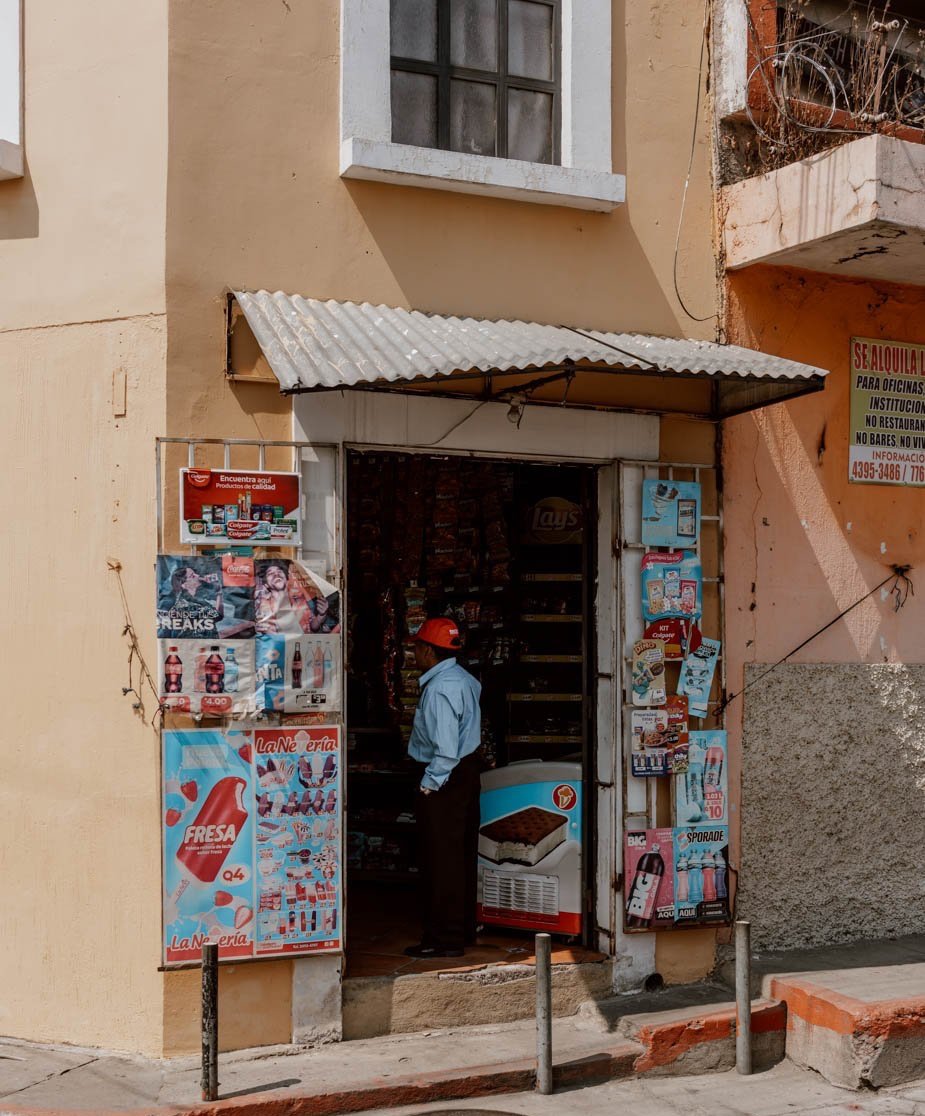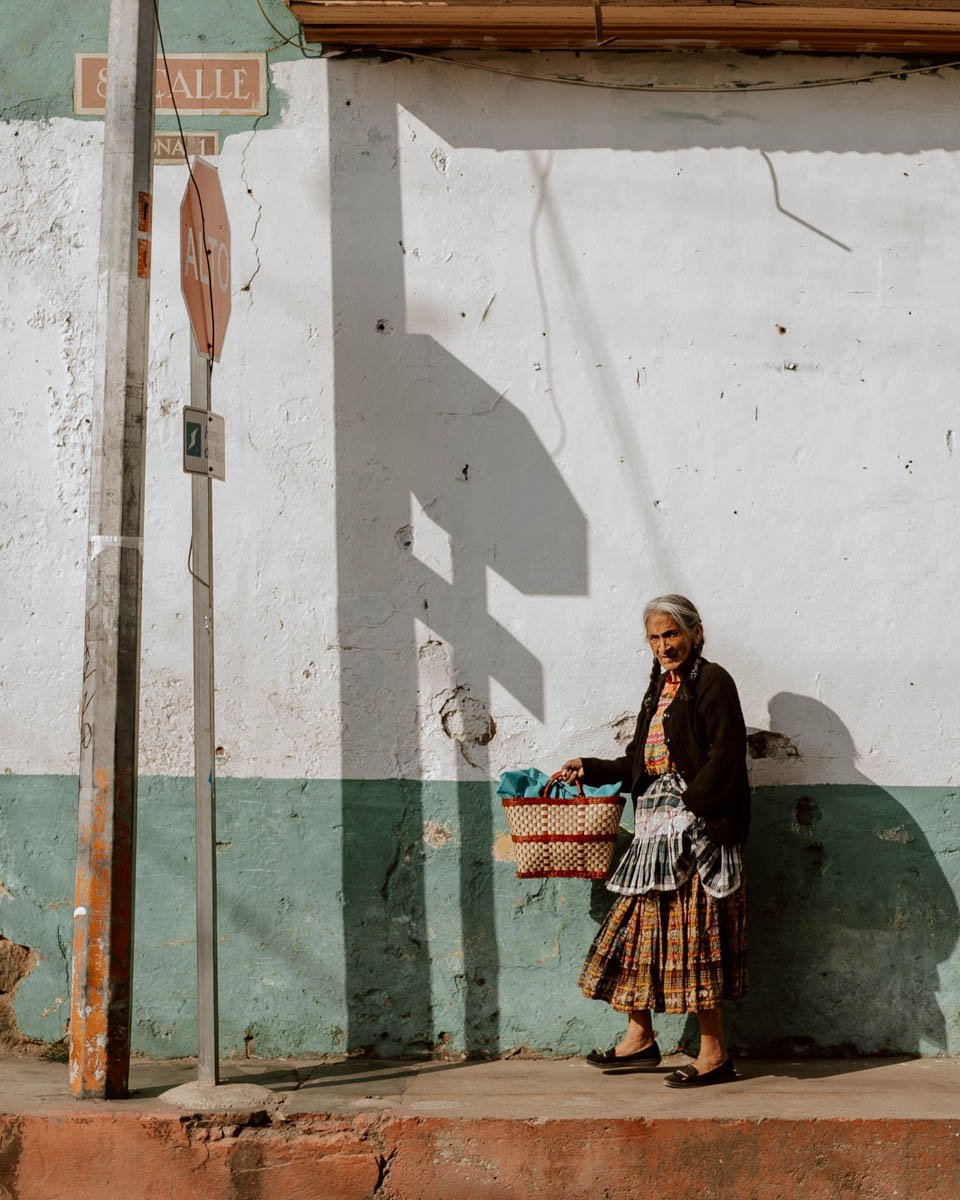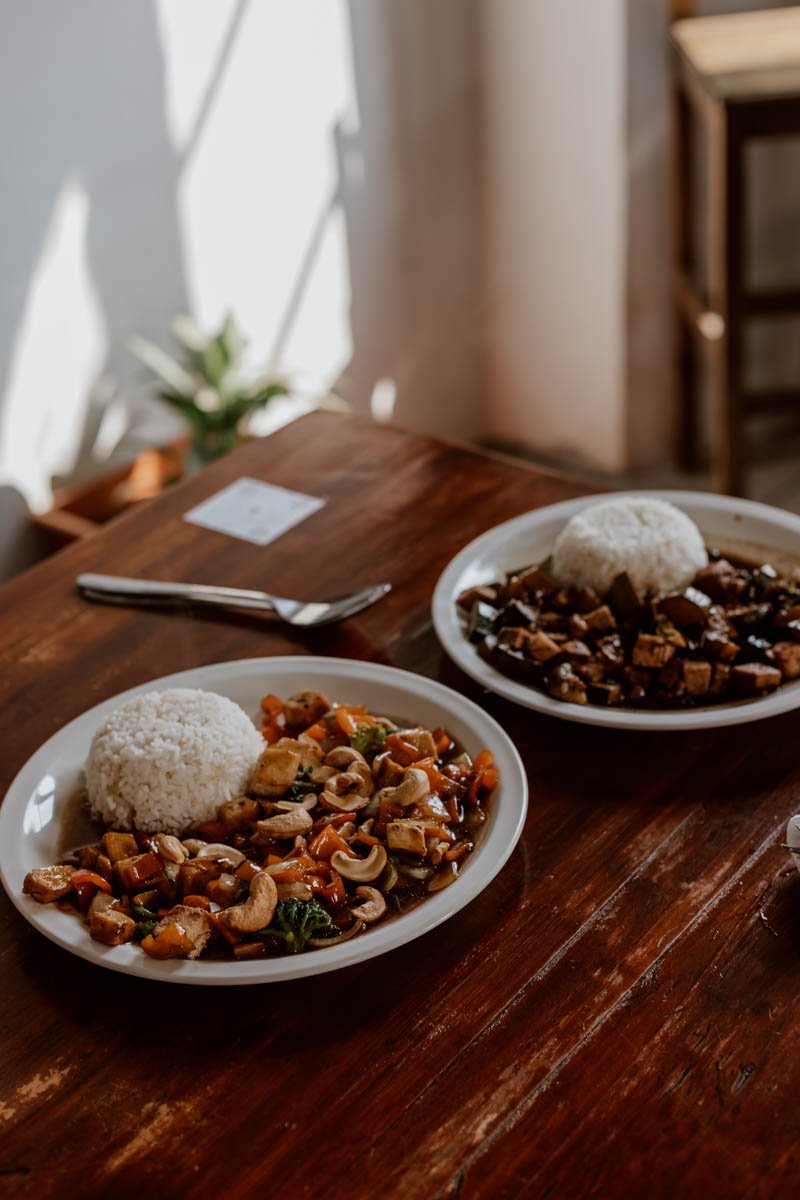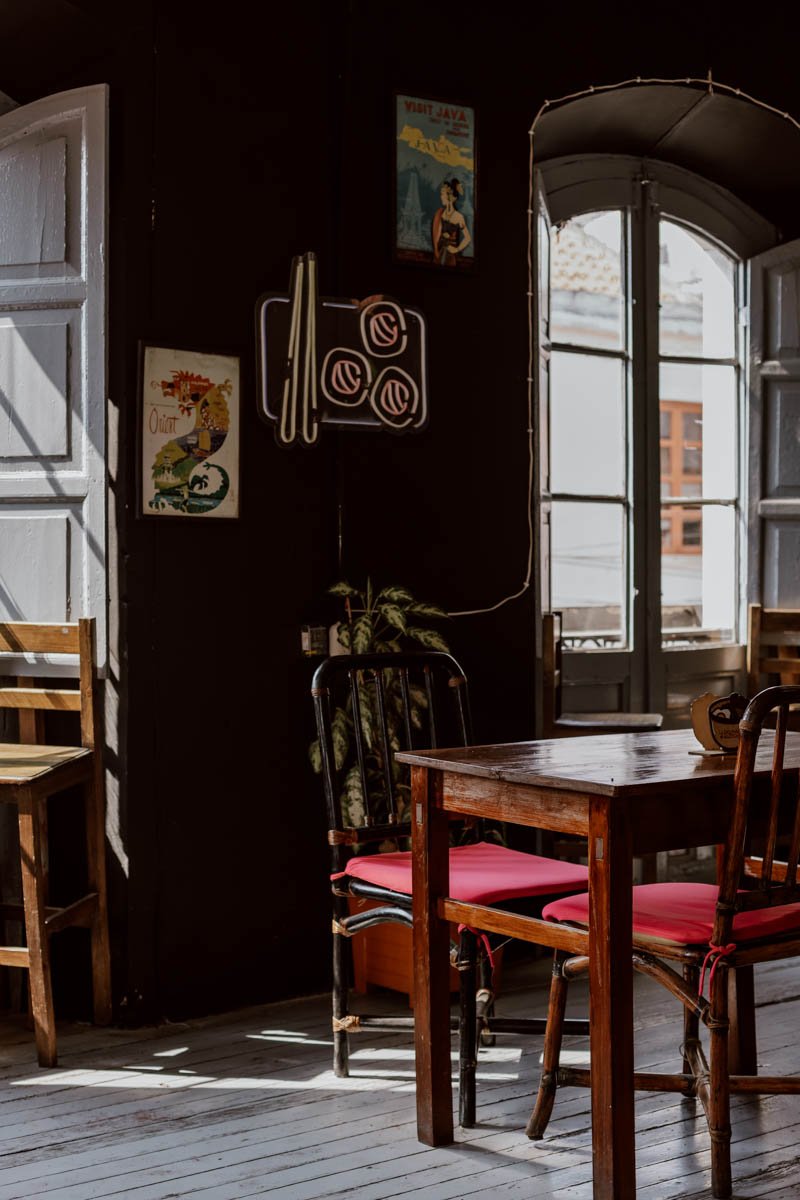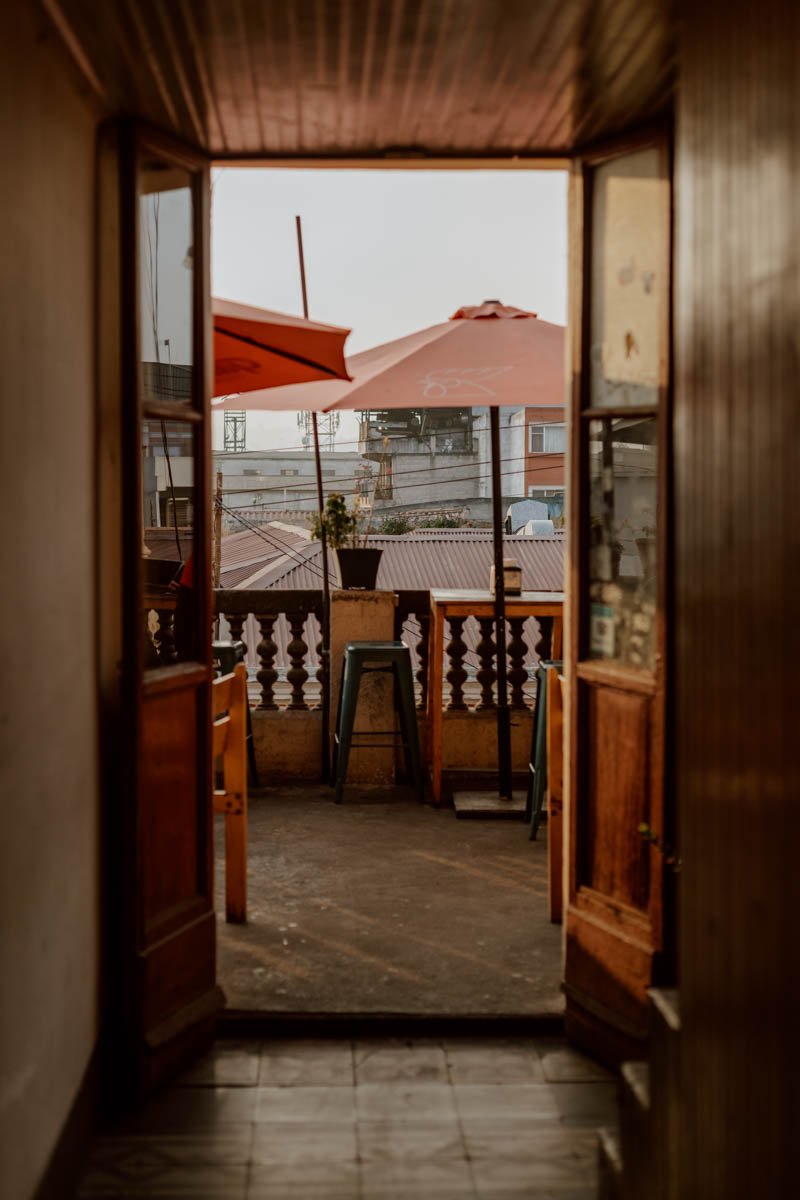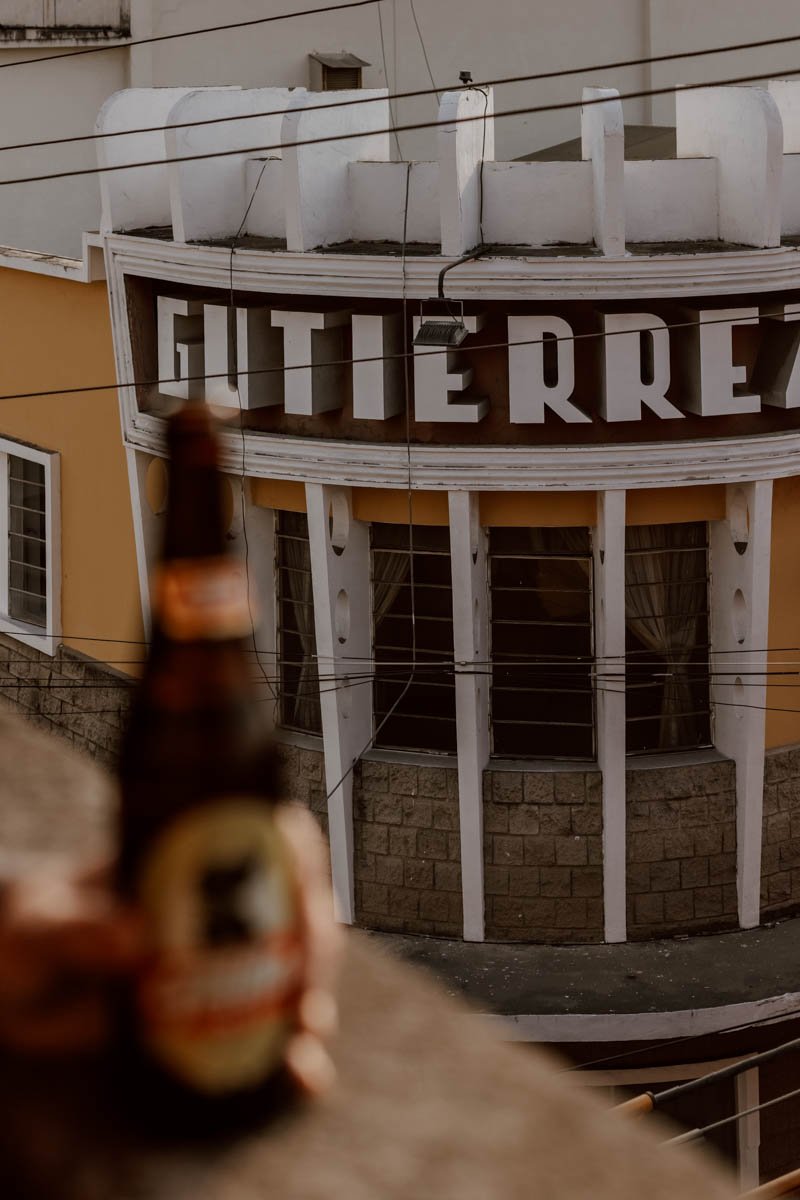Xela is one of our favourite places in all of Guatemala, and a popular place for those that love the outdoors or wish to improve their Spanish. In this guide we cover the best things to do in Xela, alongside our favourites places to eat & drink and advice on where to stay.
This guide has been completely updated & expanded following our return to the city in March 2024.
A place of two names, Quetzaltenango can at times feel like it’s from another era.
A time when men shined their shoes, starched their collars, and streets were lined by tailors, seamstresses, and shops selling statues of Jesus and Mary.
Tucked away in the folds of the western Highlands, the second-largest city in Guatemala is architecturally distinctive and an excellent base for hikers, backpackers, and language learners.
More commonly referred to by its its K’iche’ name of Xela (pronounced shay-la), it's somehow yet to force its way onto the list of essential stops on first-time Guatemala itineraries alongside Antigua, Atitlan, and Acatenango.
For us, as it’s is one of our favourite places in Central America, that's no bad thing at all.
Unlike the old capital and the lake, the city's rhythms don't revolve around the wants and whims of tourists or travellers. Most businesses are locally-owned and for local needs, with the few exceptions retaining the feeling of a hideaway, rather than a cut-and-paste place for gringos. There are no fancy flashpacker hostels or plush boutique hotels, most evenings are incredibly cold, and there isn’t really a major landmark, gallery, or museum of note.
But man does this place have soul.
Once you throw in the fact that it's also got Guatemala's best coffee scene and you can independently do day trips up volcanoes, by sacred lakes, to super-local markets and relaxing natural hot springs, there’s a reason it can get so under your skin.
After spending three weeks Xela across two trips, we've updated this guide with all of our favourite places, experience, and recommendations on where to eat, stay, and play to help you plan your own visit.
This is 13 Wonderful Things To Do In Quetzaltenango, Guatemala.
the xela essentials
Where / The second-largest city in Guatemala, it’s 4 hours from Antigua, 2 hours from Lake Atitlan, and close to the Mexican border crossing
Active / Xela is well located for all sorts of outdoor adventures, with Santa Maria Volcano, Tajumulco, Fuentes Georginas and Laguna Chicabal all easily accessible day trips
Español / Several excellent language schools in the city making it an ideal place to take some Spanish classes
Café / Surprisingly excellent coffee scene - 5Ms Coffee House and Chinajul Café are our faves
Stay / We love the always popular Casa Seibel but if you want a little more comfort, consider Hotel Muchá
13 Wonderful Things to Do in Xela (Quetzaltenango)
Take in the Street Scenes
It was on our final morning in Xela, after we joined our group to do a three-day hike to Lake Atitlan and learned that half of them didn’t really like the city and the other half wished they’d known to stay longer, where our comparisons with Italy were confirmed.
If Antigua is Florence, Siena, and Verona, then Xela is Naples.
Thats’s one of our favourite cities in the world for its history, its art, its architecture, its food, and its chaos. A lot of visitors really dislike it because it isn’t as filmset pretty and predictable as its northern counterparts, but others instantly fall for the characters, the noise, and the daily scenes playing out amongst the buildings of blackening grey stone.
Whilst nowhere near the same scale or size, Xela gives us the same vibes.
A big part of the joy and the enjoyability is in the little moments for the curious eye watching life unfold in a way that’s different to home. Where you can wander around - with or without a camera - and see something you don’t quite understand or that sparks your senses.
Not everyone will see Xela through the same lens as us, and Emily knows that she wouldn’t have ‘got it’ if she’d visited the first time she was in Guatemala many, many years ago. And that is totally fine - you’ll still enjoy it as a base for a few days or a week to do some hiking - but just remember to sit and look sometimes.
Learn Spanish
Podcasts, YouTube, online lessons, newspapers, music, movies, Michel Tomas, and the odd chat in Spanish amongst ourselves (often after having imbibed a couple of drinks) or with the surprisingly large number of Colombians that call our small home town home, we’ve found various ways to improve our Spanish when we’re not travelling.
That language learning however began more than a decade ago, in a language school in Guatemala; two weeks that set us on the course for a deeper understanding of a part of the world that would quickly become one of our very favourites.
We’re still far from fluent, but without a steadily growing embrace of the Spanish language on our Latin American adventures, we never would have been able to chat with Bolivian taxi drivers about an upcoming election, learn the tragic stories of Colombia’s and Chile’s forgotten people, the reasons a poor farmer from Guatemala feels rich beyond words, or translate a Nicaraguan soldier’s tales. Our experiences have been made so much richer by our ability to speak meaningfully with those we meet, and not having to rely on tours, hostels and English-speaking guides has opened up these countries in a way that is impossible for those who never try.
Of course, we appreciate that not everyone has the time or inclination to learn Spanish; the fact that you’re reading a guide to Xela right now however, leads us to believe that you’re the sort of traveller who we don’t have to try and convince!
Whether you’re looking to take that first lesson, improve on the basics or advance from intermediate, Guatemala has a vast number of language schools offering classes at very affordable levels.
And whilst Antigua is undoubtedly the centre of the country’s language learning, with what felt like a Spanish school on every corner, Quetzaltenango - with its distinct lack of tourist-focussed business, and indeed that many tourists - offers an excellent opportunity to learn in a more immersive environment. Spanish is a second language for many locals, far fewer people speak English, and you’ll be find it easier to take the small and big steps to get used to speaking the language on a daily basis.
The price depends upon how many hours of tuition you’d like, and whether you would like homestay accommodation and additional activities include. Expect to pay around $150 USD a week for 25 hours of private tuition, or $220 USD for tuition plus accommodation with a local family and meals (you can usually negotiate better rates if you sign up for more than a couple of weeks).
All classes are taught in Spanish, and whilst some teachers can speak English, don’t expect them to do so unless you’re trying to clarify a specific point you’re struggling to understand. This may sound daunting, but we promise you, it’s the best way to learn!
As mentioned, there are quite a few Spanish immersion schools in Xela, but some to take a look online include:
Request // If you’ve personally learnt Spanish in Xela, and you’d recommend your school, we’d love to hear from you in the comments. It can be difficult picking the right one, and we know how much we love a personal recommendation.
Enjoy Xela’s Coffee Scene
We expected more things to change here in the decade since our first visit, but in most ways, Xela had remained refreshingly similar.
The coffee scene was however markedly, wonderfully different.
Coffee is big business in Guatemala. The crop was introduced in the 1850s, and is now responsible for about 40% of agricultural export revenue, with nearly a quarter of the population is involved in the industry. It’s the 9th largest producer for coffee in the world.
So, coffee lovers love Guatemala. Ten years ago, we weren’t really that refined in our tastes, but now we are those slightly pretentious people who frown on anyone drinking a cappuccino or flat white after a certain hour, will comment on flavour notes and profiles, and go out of our way to order a V60.
Coffee twats in other words.
The emergence of a new-wave coffee scene in Xela is thankfully lacking in all pretentiousness. Instead, it’s largely locally-led and owned by a younger generation of baristas taking real pride in what is produced in the country’s hills, and creating cool spaces for both travellers and Guatemalans to meet and appreciate it. If you’re usually a frothy and syrupy latte person, it’s the perfect opportunity to sample different styles and preparation methods (especially V60s and Chemex) and try to pick out the more subtle tastes of different roasts, beans, and brews.
We would actually go so far as to crown Xela as the coffeeshop capital of Guatemala. Ones to add to your list are:
5Ms Coffee House | We stumbled upon this little place after San Francisco El Alto, and are so happy we did. Marito is such a passionate guy about what he does, and becomes engrossed in his scientific approach to weighing, measuring, sniffing, and mixing. His cold brew was the best we’ve ever tasted anywhere, and more akin to a cognac than a coffee. Find it here on Google Maps.
Chinajul Café | Offering Single estate and origin beans from HueHuetenango,V60s, the space is also very laptop-friendly and ideal if you’re wanting to work, plan, or study Spanish for a few hours. Shout out to Max who’s the really nice fella who works there, and doing his grandparents proud!
Habitual Coffee Brew Bar | A cool spot that introduced us to the excellent music of Hermanos Gutiérrez. It’s quite limited in space, so more of a place to drop into for a drink than to hang out in for too long.
Pigmento | The one on the list that’s closer in aesthetics to what you’ll find in Antigua or back at home, but still locally-owned and led. A light, bright space with poetry books in the windows and plenty of space to work too, they have really put though into curating their menu - and the orange / yuzu blends are worth a punt!
We only passed by Cebada Pan & Café, which has really nice interiors and serves up French pastries.
Admire The Architecture
Sometimes it can feel like there are only three architectural styles in Central America: 18th century colonial, modern, and the bric-a-brac of everything built in between.
Quetzaltenango, due to its longevity as a commercial hub, offers something completely different to everywhere in the region, but strikingly similar to what you'll find in Greece, Italy, and various European cities.
The clean, rational lines of neo-classical architecture are abundant on facades and street corners in the historical centre, with many a Doric pillar and pediment. There's a theatre that wouldn't look out of place in Paris, the central plaza where everyone meets in the late afternoon is lined with columns and has a monopteros at its centre, whilst students eat pizza and drink local liquor in a mustard yellow building design by an Italian, and there's even temple by the bus station and a traffic jam that could be dropped into Athens without much fuss.
There are two reasons why so much of Quetzaltenango looks so well, Greco-Roman.
Manuel Estrada Cabrera, born and buried in Xela, was dictator for 22 years and the longest-serving leader of Guatemala; he also really liked the goddess Minerva.
Essentially the Roman version of Greece's Athena, she's primarily known as the goddess of wisdom and learning. Cabrera, with a vision of modernising the country and prioritising education, created the annual Fiestas Minervalias (Festival of Minerva) to honour young students. He also commissioned the building of several temples dedicated to the goddess across the country, with the most impressive still standing here in Xela, as well as a flurry of other Greek & Roman inspired neo-classical public buildings.
The second reason is because Xela outlasted Antigua and some other colonial outposts as a hub for post-independence commerce. A late 19th century coffee boom brought increased prosperity, with many of the plantations nearby depending on trade and transport links. This meant Xela's position as a city of importance in Guatemala and Central America stretched well beyond its days under colonial rule, but European influences remained and shaped the elite's interest in Belle-Epoque architectural styles.
These are most clearly seen in the Parque a Centro América (maps), which is the hub of daily life in the city centre and meeting point for young and old. There are columns on the north and south sides, teenage couples hang out inside the beautiful monopteros at its centre, whilst the Casa de La Cultura and Town Hall at its edges are unmistakably Hellenic in style.
Another impressive example is the El Teatro Municipal (maps). Built in 1894, it still has performances, but not terribly frequent, and you can sometimes go in to have a look around too. San Juan de Dios church is another that stands out.
However, it is the Minerva Temple (maps) which is most incongruous. Next to the chaotic eponymous bus station, market and zoo, it now stands solemnly in the middle of a busy road, empty and gated off. It is however one of only few of Minerva Temples which remain in Guatemala, with the others brought down by earthquakes, ruined, or demolished to make way for a baseball stadium in the capital.
You will see many of the architectural styles and influences as you wander around the historical centre, and don't necessarily have to go out of your way to see the temple, but they play a part in making this city feel so distinctive. Indeed, the blackening, rundown, and ramshackle state of some of them only serves to further our Naples comparison.
As for Manuel Estrada Cabrera? He was eventually removed from office, jailed, and laid to rest in a mausoleum in the city.
Unsurprisingly, it's got pillars and a pediment.
get hot and steamy at the springs
Las Fuentes Georginas, discovered in 1902 and named after an ex-dictator's wife, are a network of several natural volcanic hot springs aided and developed by human hands. For locals, they're a popular weekend destination and for travellers, they offer a gorgeous secluded retreat in lush greenery to chill out for a few hours.
Indeed, a visit here is a great way to unwind after a hard week’s studying, and the perfect spot to ease those post-hike aches and pains.
There are several different pools within the complex, with the three 'main pools' the most popular and crowded due to their ease of access and family-friendly set-up. However, whilst they're pleasant and warm enough, on their own merits they probably aren't worth coming all this way - instead, take our advice and head down to the secret pools hidden away at the bottom of a hundred or so dirt and timber stairs.
The smaller pools are more thoughtfully hewn into the rocky landscape, and surrounded by lush vegetation and a waterfall. It really is a wonderful, peaceful setting, and when the mist began to roll in through the trees, coalescing with the steam and enveloping all before it, it really was quite special and, dare we say it, romantic.
Where & When | The pools are found here on Google Maps, around 17km from Xela. They are open from 9am until 6pm daily, but we recommend arriving early to enjoy the pools without the crowds (especially if visiting on weekends).
Cost | Entry is 60Q for foreign tourists, and 30Q for Guatemalans
How to Get There | You can either take a taxi from Xela, or opt for a bus plus taxi/truck combo.
We’ve put together a complete blog post with absolutely everything you need to know to plan the perfect day trip to Fuentes Georginas, including full details on how to visit independently (although it is possible to join a tour too).
blow your top at santa maria & santiaguito
Exasperation is not a feeling you want on a hike.
We had finally made it above the clouds, but steps and breath were becoming shorter. Desperate for a second wind and with nobody else around, we broke one of our cardinal hiking rules, and played an Andrea Bocelli song on our phone.
The roaring crescendo of ‘Con Te Partiró’ helped only marginally.
One of Guatemala’s many volcano hikes, this was meant to be our ‘enjoyable’ day on a lesser-visited trail, with tantalising views over the active cone of Volcan Santiguito the reward.
But Volcan Santa Maria was kicking our arses.
Maybe it was the altitude or because we’d underestimated the timings for getting to 3,772 m - overly confident after the torturous ascent of Volcan Concepcion in Nicaragua - but even Elias, the hike dog who had joined us back down in the village, seemed to regretting his decision (tortilla treats aside).
We scrambled on together, one foot after another, reminding ourselves that the point of all our volcano hikes isn’t necessarily to enjoy them: it’s to endure them. And then bask in the glow of that first post-hike beer having earned the right to point it out the following day and say ‘we bloody well climbed that’.
A 30,000 year old stratovolcano, Santa Maria was responsible for one of the three largest eruptions in the 20th century. According to records, there was darkness for nearly three days in much of the surrounding region and ash fell as far away as San Francisco, California.
Subsequent eruptions led to the creation of the 'Santiaguito lava-dome complex' within the crater, the views of which - on a day with better weather than we experienced - you can see straight into from the summit of Santa Maria.
To do this hike from Xela, you have two options:
· Join a guided hike for sunrise, which starts at around 1-2am
· Leave Xela on your own, or with a guide, to start the trail at 5 or 6am.
The hike in the dark gives you a great chance of making the summit for sunrise and enjoying clear views into the Santiaguito crater, but it would present challenging conditions overall.
We have share much more detail and advice to help you plan ahead in this post: How To Hike Volcan Santa Maria
Due to safety concerns, it is advisable to only climb Santiaguito with a guided tour.
get lost and found at the markets Of Xela
If you’ve read any of our guides from, well, pretty much anywhere, you’ll know how much we love a local market. So, it should come as little surprise that we rank spending at least on hour or two in one of the city’s several mercados, as a top thing to do in Xela.
Mercado Minerva | If you've made your way to/from Xela by chicken bus, then you're likely to have spent 10 minutes hauling ass through Minerva market with all your worldly possessions on your back. However, if you get the opportunity to spend a morning or afternoon wandering around it during your stay, you're in for a great experience. All the manic hustle and bustle you'd want of a Central American market, with cheap clothes, wonderful fruit and veg, shouting vendors, strong personalities and traditional restaurants - it's a sight for all your senses and an excellent place to practise your Spanish!
Do be aware that Minerva does have a bit of a reputation as being unsafe. Whilst this doesn’t mean it should be avoided, its size and high-paced nature does increase the likelihood of encountering opportunistic thieves and pick-pockets (also large bus stations do tend to attract less than savoury characters). For this reason, use common sense when visiting, don’t bring lots of valuables and keep an eye on your stuff.
You can find Minerva market here on Google Maps.
Mercado La Democracia | With several of the day trip buses leaving from and returning to the north of the city, we found ourselves walking through Mercado La Democracia a few times during our time in Xela.
Whilst it does offer various undercover sections, all helpfully segregated by the type of merchandise being sold, these are surprisingly calm and quiet; great if you’re actually looking for something specific, but a little too reserved to be of much interest to a visitor.
The street outside however is as fascinating as it is loud and seemingly unwieldy. Microphone-holding street pastors compete with baritone street vendors, the road is lined by stalls selling any sort of street food you fancy (providing it is either meat or corn based, and drenched in oil), and brightly coloured buses toot, cajole and nudge their way through the throngs.
If you find yourself in that part of town, don’t rush back to the centre
You can find Mercado La Democracia here on Google Maps.
Top Tip // Near the market you’ll notice a rather incongruous looking church. This is Iglesia San Nicolas, and despite being built just a little over 100 years ago, its mock-Gothic architecture certainly puts it in contrast with the squat commercial buildings that surround it.
Mercado Municipal | If you don’t want to go all the way out to Minerva (you have to take a bus/micro van), be sure to pop into Quetzaltenango’s Mercado Municipal instead.
For those travelling on a bit of budget, this will be the best place to stock up on fresh produce or grab a cheap plate of food or menu del dia for lunch, but even if you’re not shopping, be sure to pop your head in for a slice of authentic Xela life.
Many of the stalls tend to start shutting up by late afternoon, so for the best experience we recommend heading there in the morning.
You can find Mercado Municipal here on Google Maps.
We also stopped by Mercadito Las Flores (maps), a small market with the most photogenic pink walls. There’s no reason to go out of your way to visit (unless you want a photo), but if you’re staying this side of the town it’s a good place to stock up on your groceries!
tombstones, legends and history in the graveyard
Recommending you spend a few hours in a cemetery on a 'top things to do' list may seem a little odd - and perhaps speak of there really not being much else to do in a city - but that couldn't be further from the truth in Xela.
Stories of detested dictators, spurned gypsies with graves covered in lipstick and roses, poets, romantics and revolutionaries all rest in Xela's colourful sprawling cemetery, which gives you a unique insight into the complex and often divided history of the country. Nothing was more stark for us on the day than seeing the plot towards the back where Maya are traditionally buried, often with only a simple hand-made cross in a pile of dirt and an obituary written in marker-pen, contrasting hugely with the grander mausoleums elsewhere.
The cemetery itself is a vibrant and photogenic place to wander around on a sunny day, with a fantastic volcanic back-drop. Try to find a knowledgable local with whom to visit to breathe some...er, life...into the stories.
Remember, this is also an active cemetery so please be mindful and respectful of other visitors.
You can find the cemetery here on Google Maps.
Try Your Hand at Weaving at Trama Textiles
In towns, cities and villages across this varied Central American country, on balconies, in hidden hidey-holes, inside homes, markets and workshops exists a familiar sight that is so unequivocally Guatemalan: a woman robed in traditional dress, and wearing a loom, her nimble fingers transforming vibrant threads into intricate tapestries bursting with colour.
Mayan women here have used these devices to weave clothing, blankets, and the iconic huipil - the tunic that lays at the heart of her wardrobe - for centuries, with each taking months to create, and telling its makers unique story, their beliefs and their history. Yet whilst they make these items because they need them, it long ago transcended simple necessity. Indeed, each geometric pattern, and each depiction of a sacred animal or plant, represents a symbol woven into the fabric of Mayan culture.
In the last few decades however, after a bloody civil war ravaged these Mayan communities, the backstrap weave has offered an alternative opportunity for the women left behind.
Across the country, you’ll now find countless female-led coopearatives, many run by and for their communities, that offer a way for these women to support themselves and their families whilst providing a sense of purpose and empowerment, and the possibility of a brighter future.
Places like Trama Textiles in Xela.
Currently, Trama work directly with 100 women, from 17 weaving communities, across 5 regions in the Western Highlands - and you can support them by visiting their headquarters in Quetzaltenango.
Being a little limited in how long we could spend there, we only had time to visit the shop (and pick up four wonderful placemats), but those with at least a few hours to spare can opt to join one of their popular weaving classes, where you can learn to make anything from a simple scarf to an intricate table cloth.
The Details | You can find Trama Textiles on 3a Calle 10-56, here on Google Maps.
The prices of the weaving classes depend upon the item you’d like to make, and therefore the time that it will take.
A one hour demonstration costs 50Q, and beyond this prices vary from 250Q / 5h for a sample cloth and 400Q / 10h for a scarf, to 1000Q / 30h for an intricately embroidered table cloth. Find full details on the classes on their website.
Classes must be booked in advance but the shop is open Monday to Friday, from 9am - 6pm.
check out chicabal
In the village of San Martín Sacatepéquez, wooden plank signs in four languages request that visitors ‘ask permission from the creator of the earth’ before commencing their walking up to La Laguna de Chicabal.
Surrounded by one of Guatemala’s last cloud forests at 2,712 meters (8,879 feet), for travellers the crater lake is an easy half-day trip from Xela. But, for the Mam-Maya communities that make up about 8% of the country’s population, it is the centre of the world.
We spent a morning there walking its perimeter and, fortunate enough to have climbed and visited many a Central American volcano and crater lake, would have described it merely as ‘pleasant’ rather than ‘unmissable’ trip until we heard, then saw, the pilgrims across the water.
To read that a place is sacred is one thing, but to witness what that really means to a community is another. When we eventually decided it was appropriate to continue on and pass them, the wails had transformed into sweet hymns and songs of praise, led by a priestess with her back to the dark water and a scarf on her head.
If not life-changing, that fifteen minutes of listening to them across the shore was, most certainly life-affirming, and the sort of moment for which we travel.
Their song and the scene by the shores of Laguna Chicabal will stay with us both for ever.
There’s an easy, quick, and convenient way, or a more interesting, cramped, and sweaty way to arrive at Laguna Chicabal from Xela.
We opted for a combination of the two.
The route to the lake is split into two distinct parts, with a couple of options available within each depending on your travel style, budget, time, and inclination to walk:
Part One | A colectivo or Uber from Xela to San Martín Sacatepéquez | 50 - 90 mins
Part Two | Walk from San Martín to the lake, or take a ‘torito’ pick-up truck | 20 mins - 2 hours
However you travel there and back, you’ll need to set aside a half-day for this day trip from Xela, and we’ve shared the key details, locations, and costs in our complete guide to visiting Laguna Chicabal, so recommend heading over there before making any plans.
Note that clouds are an important factor when planning your departure time and means of transport, as it’s common for Chicabal to be shrouded in them from around 10am (give or take). That doesn’t mean you need to set off at an absurdly early hour like we foolishly did BUT, generally speaking, you will want to get up there in the morning for the best views.
CONQUER TAJUMULCO
It's tough, it's cold and you'll hurt like hell the next morning, but it's totally worth it.
Not only will you be able to brag that you've climbed the highest peak in all of Central America, but you will see landscapes and a sunrise that will blow your mind.
Xela offers a variety of volcano-trekking opportunities, but Tajumulco is definitely one for the bucketlist.
Meaning ‘above the clouds’ in the the local Mayan language, Voclan Tajumulco stands at 4,220 metres (13,845 feet) and whilst the total distance is only 15km as you have to carry quite a lot of gear, sleep in tents at the 4,000m basecamp, deal with the steep volcanic ascent and serious altitude, it is really challenging at times.
We did it with Quetzaltrekkers, a fantastic non-profit organisation that’s based in Xela and does a number of day trips and multi-day treks in the region; we highly recommend going with them.
You can find out more about our experience in this post - Climbing The Tajumulco Volcano.
Top Tip // Feeling stiff and sore after all these hikes? Go stretch it all out at Casa de Yoga. They offer various classes for 20Q per session. Alternatively, if you’ll be in the city for a while, they have weekly and monthly rates - find out more on their website.
Take a day trip to San Francisco el alto
High up on the list for most first-time visitors to Guatemala is the famous Chichistenango Market. One of Central America’s largest markets, it’s a bi-weekly (Thursday & Sundays) affair that attracts vendedores from across the Western highlands, and absorbs almost every inch of this rural town.
Yet whilst it’s far from a tourist market, and still predominantly caters to the local population, its popularity has undoubtedly affected its authenticity somewhat; at many stalls it generic, factory-made souvenirs outnumbering anything unique or artisanal.
Rather than returning to Chichi on this most recent trip to Guatemala, we were therefore delighted to learn about Mercado San Francisco El Alto, less than an hour outside of Xela.
This market is huge, spread across almost every street in the town and sells all manner of household items, clothing, fresh produce, street food and bric-a-brac, but what really sets it apart is the vast open air animal market.
As huge animal lovers (and animal welfare advocates) we were a little concerned that we may encounter certain scenes or interactions between farmers and livestock that would upset us, but on the whole it was a wonderful experience - in large part because of the encounters that we had with the vendors and the people there to shop.
It’s not an exaggeration to state that tourists don’t really come here, and because of that so many people were curious about our presence, and wanted to stop for a chat. If you’re staying in Xela to learn Spanish, this is a fantastic place to come for a few hours and try out your language skills!
When | San Francisco El Alto is held every Friday. Technically it’s an all-day affair, but we were quite surprised to see many stall owners packing up around 11am. For this reason, we’d recommend getting to the market as early as possible so you can enjoy it at its most busy.
How to Reach San Francisco El Alto | You can find San Francisco El Alto here on Google Maps, and you have two options to get there: take the bus, or grab an Uber.
We took an Uber there (cost 70Q, took around 35 minutes) and a public bus back - which dropped us off on the corner of 7a Calle and 19 Avenida.
To take a bus there in the morning, the generally accepted route is to head to Minerva bus station, from where you can catch a direct bus. This costs 8Q each and takes around an hour. Given that we got dropped off north of the city, it’s possible that you may be able to catch the bus from elsewhere but we don’t know definitively - if head to Mercado San Francisco El Alto and can confirm one way or another, we’d love to hear from you in the comments!
If like us you’’d prefer to head straight to the animal section, you can find it here. Note that it’s around a 15 minute walk from where the bus or taxi will drop you off.
To return to Xela, you can either head to the bus station (maps), or alternatively they stop on the road that passes by the livestock area.
Head Up Cerro El Baúl For Views
Located a short distance from the centre of Xela is Municipal Cerro El Baúl Park, a protected, forested area that encompasses the dormant volcano Cerro El Baúl, and various hiking trails, as well as offering stunning views out over the city below, and the Western Highlands beyond.
At least it would do, if you didn’t try and head up there in afternoon once the clouds had rolled in. Yeah, rookie move on our part (which is why there’s no photo accompanying this section - a white out image wouldn’t really cut it!).
It’s a super popular place for locals to head to on the weekend to enjoy strolls and runs amongst nature, and offers a lovely spot to have a picnic if the weather is cooperating!
You can take a taxi to Cerro El Baúl, but if you’ve got the time, we recommend hiking the approximately 3.5km to the top. There are technically two routes you can take, and Google Maps will naturally default to the shorter option but do be aware that this passes through farmland where there have been reports of aggressive dogs.
The ‘safer’ option is therefore the slightly longer route via the main road.
Additionally, there have been reports of robberies at the top, so if not visiting on the weekend when there will be lots of people around, be sure to limit the valuables you bring with you and avoid visiting alone.
There’s technically a 5Q entry fee but nobody tried to charge us - possibly because we were the only ones around, didn’t explore much because of the weather and left quickly.
volunteer with entremundos
Few of us pass through Central America without at least being tempted to give up a few hours helping those less fortunate than ourselves, and Guatemala is an excellent country to do some volunteer work - whether you want to build houses, teach kids, help deliver medical care or offer social media expertise, there is quite literally something for everyone.
The problem can often be identifying an NGO that can benefit from your skills but which at the same time provides you with what you need or want and doesn’t exploit the community you’re wanting to help. This is where Entremundos can really assist you.
They act as an intermediary, connecting volunteers and organisations and providing them with resources to maximise the developmental impact of each organisation and aiding the most vulnerable or at risks groups around Guatemala's Western Highlands.
Through their website you can access a directory of volunteer opportunities all over Guatemala, or stop by their offices to have a one-to-one with a placement officer to find out how you can really help.
Where to Eat in Xela
Sabor de la India (maps) | Good Indian food is difficult to find in Latin America (although did have a particularly excellent meal in Arequipa, Peru), so when we learnt of Xela’s own offering we just had to visit. And the verdict? Pretty bloody excellent. The menu is small, but what they do, they do incredibly well - especially their saag paneer and chana masala. You can order individual plates or excellent value combo dishes.
Pupusas | One thing that really surprised us our on this second visit to Guatemala were the abundance of pupuserias all over the country - we wouldn’t be exaggerating if we said we took pretty much any opportunity to indulge in one of our very favourite street foods. If you’re also a fan of this El Salvadorean staple, a couple to check out in Xela are Los Cheros Pupuseria Y Tipicos (maps) and Pupuseria Maricela (maps).
Whilst we’re on the topic of street food, if you’re looking for a good, cheap snack, don’t miss the little food carts on the west side of Parque Central, especially the one selling ‘Elotes Locos’ and ‘Elotes Mexicanos’- piping hot corn slathered in valentina hot sauce and tajin. Supremely messy, but spectacularly good!
La Esquina Asiatica (maps) | Good value and big portions of real tasty Asian food were a huge surprise to discover on our first visit to Xela, and we were delighted to see they’re still going strong 10 years later! What makes this restaurant extra special in our books are the wide variety of vegetarian/vegan options on the menu, with almost all mains available with tofu or vegetables.
Ring the buzzer, it's on the second floor. Please note, that it's not open on Tuesdays and closes in the afternoon on Sundays.
Ay Chihuahua (maps) | Located a 20 minute walk from Parque Central, this excellent Mexican restaurant is more than worth a visit. With a super cool set-up, it caters to locals as much as it does foreign tourists and offers a damn authentic menu of modern Mexican cuisine. The ceviche tostadas were incredible, as were their tacos (reasonably priced too at 30Q for three). Only downside is that veggies aren’t really catered for.
Rustico (maps) | In a part of the world where sugar is added to everything, including bread, finding a good bakery is a little like striking gold - in Xela, that place is Canadian-owned Rustic. Stop in for lunch and a sweet treat or pick up a loaf of sourdough bread to use back at your hostel. The almond croissants are particularly excellent.
Restaurante Tertulianos (maps) | Located in an early 20th century Italian style colonial property, the beautiful Restaurante Tertulianos provides fine dining, Xela style. Offering traditional Guatemalan dishes alongside more international fare, the changing menu at the time of our visit wasn’t particularly veggie-friendly but if you’re looking for a meal that goes above and beyond in a gorgeous setting, this is one to consider.
La Comida Taiwanesa (maps) | Yep, you’ve translated that correctly in your head - Taiwanese food in Xela! This hole in the wall spot serves up delicious tofu and veggie filled empanadas, various ice creams and pastelitos - warm, dreamy soft pancakes stuffed with vanilla cream. The prices make La Comida Taiwanesa a budget backpacker’s dream, but the food is so darn delicious that literally everybody should eat here at least once.
We stopped by on no fewer than three occasions, and still regret not indulging a fourth.
Where to Drink in Xela
The best place to head for a drink in Xela (at least in our opinion) is within Pasaje Enriquez (maps), a passageway through a beautifully decaying, old colonial building in the central park which is lined with bars popular with a younger local crowd - you can chose to head into the bars themselves, or alternatively sit in their designated ‘outdoor areas’ (which are actually undercover).
There’s quite a large number to choose from, but a few of our favourites were:
· Bar Salón Tecún. Said to be the oldest bar in Guatemala, this place is a bit of an institution and often hosts live music. The pizzas, although fairly expensive by Guatemalan standards, are surprisingly good.
· Casa Nativos. Come here for the cool little rooftop bar area that’s ideal during one of Xela’s sunnier days!
· Donde El Gringo. We stopped by here a couple of times for their decent selection of local craft beers - the michelada was also particularly good!
Other places to head for an evening drink (or post hike beer) include:
· Kasa Kiwi. This popular hostel’s rooftop bar is open to the general public and seemed to be one of the cheapest places to grab a drink in Xela, especially their happy hour cocktails. It also offers incredible panoramic views of the surrounding city. Find it here - just knock on the door and let them know you’d like to go up to the bar.
· El Cuartito (maps). This place either has the most sporadic opening hours or the staff just don’t turn up for their shifts, as despite our best efforts we never actually managed to make it for a drink. The only time we passed and saw it open was before dropping our stuff back at the guest house; by the time we returned - just 15 minutes later - it was shut again. From what we saw, the space looks really good, the menu decent and it has rave reviews. Definitely one to check out!
· El Shamrock (maps). Super popular with locals and tourists alike (especially those studying Spanish here), it’s a popular place to hang out with a suitably friendly Irish welcome. They also do a decent quiz night on Thursdays. Note that it’s a bit of a speak easy so can be difficult to find - look for the black door with a shamrock sticker on 6 Calle.
Good to Know // Eating and drinking out in Xela is a lot more expensive than you may expect, especially as unlike places like Antigua they don’t have a wealthier, foreign visitor base to prop up the prices. Of course, your money will still go further than back home, but don’t expect to be buying £1 beers.
where to stay in xela
Casa Seibel | Run by a wonderful American-Guatemalan couple, on our first trip to the country, this was one of our favourite hostels in all of Guatemala - we were gutted the had no availability when we returned! Located in a large old property in the centre of the city, it has lots of common rooms, a great kitchen, two lovely courtyards and the most wonderful furnishings (think lots of solid wood furniture, a piano, stripped floorboards and vintage finds). It's not a party hostel, but if you want somewhere to relax, a base for your Spanish school studies or a warm and friendly place to stay, this is it.
Kasa Kiwi | An old school hostel that also doubles as a travel agency, Kiwi is a popular choice amongst backpackers who value a social vibe (there’s a rooftop bar), but a comfortable room and bed to return to. Also offer a good guest kitchen. There’s limited indoor common areas, so consider the weather first if visiting in the winter!
Casa I'X is another highly rated hostel option. We stayed in Casa Elizabeth the second time, which we do recommend but is currently not taking bookings online.
Hotel Muchá | This relatively new hotel (it was a hostel up until a couple of years ago) has become a firm favourite amongst travellers looking for a chilled hostel vibe but the facilities of a hotel (at an affordable rate). They only offer privates, so they’re ideal for a couple or a solo travellers looking for a nicer option than the standard dorm. Wonderfully decorated throughout, they offer a great breakfast and really pleasant common areas.
If you’d prefer something a little more fancy, take a look at Hotel Vintage "Rialto" and Casa Morasan Hotel-Boutique, both of which are centrally located and highly rated.
Where to Next?
How to Visit Fuentes Georginas
A Complete Guide to Hiking Volcan Santa Maria
Central America’s Best Sunrise | Climbing Volcan Tajumulco
The Xela to Lake Atitlan Hike | A Concise Guide




